18 Biggest Advantages and Disadvantages of Space Exploration
President Donald Trump announced his desire in 2018 to create a sixth branch of the U.S. military that he colloquially called the Space Force. Although Congress has yet to act on this desire to take the armed forces beyond the atmosphere of our planet, in February 2019, Trump signed Space Policy Directive 4 to have these forces organize underneath the umbrella of the U.S. Air Force.
The directive formally allows the Air Force to organize, train, and equip a corps of military space personnel for actions that take place in space. “Today I’m thrilled to sign a new order taking the next step to create the United States Space Force,” Trump said during the signing ceremony. “It’s so important. When you look at defense, when you look at all of the other aspects of where the world will be some day. I mean, this is the beginning. This is a very important process.”
The initial version of the Space Force will be overseen by a civilian undersecretary and a four-star general serving as the Chief of Staff. Although this structure is not as ambitious as having a separate branch of the military, space exploration experts feel like this is a step in the right direction.
The pros and cons of exploring space are complex simply because we have limited knowledge of what lies beyond our solar system. There are still mysteries to discover about our own planet! These are the key points to consider when we begin to look at what life might look like in the vastness of space.

List of the Pros of Space Exploration
1. It is an opportunity which is available to anyone. If you have a telescope, then you have an opportunity to start exploring space. For more than 300 years, we have looked to the stars with this technology as a way to learn more about our planet and ourselves as a species. When the Hubble space telescope was launched in 1990, it gave us our first views without atmospheric interference on what the vastness of our universe was like.
With millions of images taken and tens of thousands of papers written based on the observations made from simple telescope technologies, we have learned more about the structure of our universe, its age, and the composition of our solar system in the last 20 years than our ancestors would have ever dreamed was possible.
2. It gives us an opportunity to foster genuine cooperation. Because we are a world of nation states, the investments that we make in space exploration tend to have a patriotic feeling to them. Some efforts in this scientific area are still nationally-based, but for most projects there is a spirit of cooperation between the countries of the world who have made this realm of science a top priority. We work together as the human race to operate the international space station, fund research projects, and look outward beyond the stars to see what is there. It is one of the few areas in our lives today where we set aside our boundaries to work together toward a common good.
3. It is an effort which requires us to become innovative. The 100-year Starship Program has the ultimate goal of creating a technology that will allow us to explore space. No idea is off-limits with this project. What we have found in our quest to achieve specific goals in this area of science is that there are numerous discoveries which become possible to improve our lives here at home. Everything from athletic shoes to water purification systems came about because of our push to look beyond our planet. By tackling the technological needs to stay safe in space, we can make life better for everyone down on our planet at the same time.
4. It is an opportunity to explore something new. Although there are still regions of our planet that we rarely study because of technology limitations, the vastness of the universe is a much more significant prize. Only the Voyager spacecraft have gone beyond the first boundaries of our solar system. The information they provide us nearly four decades after their launch continues to enlighten our knowledge of the universe. There are so many unanswered questions when we think about space, especially now that scientists can determine which stars have planets orbiting around them.
Is there life somewhere else in the universe? If so, would those beings look like us? There are numerous technological barriers we must cross before we could travel for long distances in the vacuum of space, but we are getting one step closer every day.
5. It creates numerous employment opportunities in a variety of fields. There are more than 18,000 people employed in the United States by NASA, along with countless contractors, freelancers, and specialists not counted in those figures. The private company SpaceX provides about 7,000 full-time high-skill positions that support the economy. Then there are the astronauts, engineers, and flight specialists who manage the actual mechanisms of space flight to consider.
Numerous indirect employment opportunities are possible because of our efforts at space exploration too. We need caterers, designers, nutritionists, personal trainers, astronomers, scientists, and many other positions to support these activities. Even though the budget for NASA is $21 billion for FY 2020, the economic returns can be five times greater because of these activities.
6. It allows us to understand our planet better. When we can observe the full scale of our planet from a high orbital position, then we can see changes that are not always possible from the ground. It gives us a way to track the changes to our environment, study ozone depletion, and measure the impacts of a warming planet. We can provide accurate prediction models for weather patterns, observe troop movements, and install safety equipment that guards against an attack. When we take full advantage of this benefit, it becomes possible to create a place in the universe that is healthier for many years to come.
7. It gives us a new perspective on our place in the universe. It took several centuries for the scientific world (back by religious zealots) to accept the fact that the Earth was not the center of the universe. When we saw that first picture from a distance of what our planet looks like from a distant point in our solar system, it became clear to see that a small, pale blue dot in the middle of the vastness of our universe puts our daily issues into a new perspective. Until we discover otherwise, this is the only home that we have. It is up to each of us to share resources, reduce conflict, and work toward a common good.
8. It allows us to identify potential dangers before they strike. The asteroid belt between Jupiter and Mars is only one source for these deadly rocks in our solar system. There may even be threats that travel through the universe to interact with our region of space from time-to-time. It would only take one significant impact to change life on our planet forever, which is why space exploration makes threat identification a top priority. If we can locate and move threatening asteroids or comets before they threaten an impact, we could stop the apocalypse before it ever gets a chance to begin.
9. It would give us access to new minerals, precious metals, and other useful items. Thanks to the asteroids which occasionally make it to the surface of our planet, we know that many of them contain iron and carbon. We also know that there is nickel, cobalt, silicon, magnesium, calcium, and several other elements present. Some might have water or oxygen contained beneath their surface. There may even be gold, platinum, and other precious metals there. We might even discover something that we’ve never encountered before.
Space exploration gives us an opportunity to access new mineral resources, allowing for the privatization of this venture. It would also give us an opportunity to start building in space because the raw materials are easy to haul and transport.
10. It gives us an opportunity to see what lies beyond in the final frontier. Unless circumstances change somehow, there will come a point in time when our species will outgrow our planet. We must begin to look for colonization opportunities in our solar system and beyond to help support the future of our race. As our scientific and technological discoveries begin to open up opportunities to visit distant stars, we can start to discover even more mysteries that will help us to answer the meaningful questions in life.
11. It could change our approach to medicine. Discovering new organic elements in space could help us to discover cures for some of our worst diseases. We really don’t know what is possible in our universe beyond the scope of basic physics. There could be untold treasures just waiting beyond our solar system to discover. Although there is always an element of risk to any exploration venture, there are great rewards often waiting for those who embrace their courage to start pressing forward. At the rate of development that we’ve seen in the 21st century, we could be looking at a very different human race in our children’s lifetimes based on the possibilities of discovery.
List of the Cons of Space Exploration
1. It could cause us harm or provide harm to other species in space. We know from experience what happens when one group of humans comes into contact with another group after generations of isolation. The diseases that transferred back and forth between Europe and the New World devastated some cultures. There were times that smallpox would kill over 90% of the local population by itself. If we encounter life on a different planet (or if they visit us), the threat of disease transmission is real. Their viruses, bacteria, and potentially unknown invaders could do as much damage to us as we could to do them. First contact would be an exciting experience, but it could also be a deadly one even though no one has any ill intent toward the other.
2. It creates high-level pollution events. We must consume fossil fuels when we launch rockets into space, which means we’re creating a significant level of pollution every time we expend fuel for exploration purposes. Even on a light load, it costs about $300,000 to fuel a rocket. Larger models could hold a half-million gallons of fuel that would be used during an entire mission. That means we are creating roughly 4 million pounds of carbon pollution with every action that we take to reach space. Then we must find a way to place these fuels safely into orbit to make our exploration efforts useful, creating even further potential problems for our atmosphere.
3. It gives us more ways to be paranoid about what others are doing. There are only five treaties which currently govern how we operate in space. Our original goal as the human race was to make it so that no one could claim a territory in orbit or our solar system that could give one nation a distinctive advantage. The creation of a Space Force could work to upset the balance that we’ve worked to create for the last 50 years. We’re already using satellites to spy on one another, monitor communications networks, and potentially target cities with weapons.
This paranoia will only increase as we push further into the stars. The only real solution to this disadvantage is to start thinking of ourselves as a planetary nation instead of one that is built on nation-states alone.
4. It will create a large amount of garbage that we must manage. Did you know that NASA tracks over a half-million pieces of space junk that orbits our planet right now? Unless we physically remove these items in some way, this garbage will linger until it falls into our atmosphere to burn up. Every item we leave behind creates a future risk for someone else. If we are going to start exploring space, then we must begin to look at ways to clean up our act before we get going. It’s bad enough that we’ve polluted our oceans with microplastics. Should a spaceship encounter that debris, it could be a deadly experience.
5. it may cause our planet to face unknown perils. A common theme in many science-fiction novels, shows, and movies is the idea that an alien race is hostile towards us. It is widely believed that water may be one of the scarcest commodities in the universe, but here we are with a planet that is more than 70% water. If we start venturing out beyond our solar system, it is entirely possible that we could encounter a species who decides that our resources are ripe for the taking. We assume that an advanced culture who could invent real-time space travel would be peaceful, but there are no guarantees. Exploring space could become an invitation for interstellar war.
6. It will always entail risk. Human beings were not meant to be in the vacuum of space. We must wear extensive protective gear to survive those conditions. Even one small leak or crack in a helmet or suit would be enough to create an adverse health condition. This issue applies to the planetary environments which we know of right now as well. Then there are the health issues to consider when the human body experiences a lack of gravity for an extended time.
NASA studied identical twins Scott and Mark Kelly when Scott took a long trip to space. Scientists monitored their bodies to see how being in a weightless environment could change the physical chemistry of a person. They discovered that genomic instability occurs, including gene expression changes, and spending a year in that environment caused a thickening of the carotid artery, DNA damage, and reduced cognitive abilities.
7. It is expensive to start exploring space. Even though the budget for NASA has not changed that much in recent years, we are spending about $200 billion per decade on our current space exploration efforts. Privatization of the industry has helped to reduce some costs, especially as SpaceX continues to work on a recoverable rocket. When you add in the costs from other countries and their space programs, our planet spends about $60 billion per year on this effort. In comparison, the United Nations suggests that it would only take half of that amount to end global hunger permanently. Should exploring space be our top priority if we’re struggling to take care of ourselves here at home?
When we examine these space exploration pros and cons, there is a certain nobleness to the idea of seeking what lies beyond the next horizon. Our society was built on the desire to explore the planet where we live. Now our culture has the itch to start pushing beyond the next boundary. Whether that means we colonize the moon, establish a community on Mars, or push toward Alpha Centauri, there is something waiting to be discovered. We’re closer than ever before to finding out what that might be.

10 Benefits of Space Exploration. (Including Medical and Economical)
On April 12, 1961, the Russian cosmonaut Yuri Gagarin became the first human to journey to outer space. The age of space exploration started that day.
But why are we so interested in spending so much time, money, and resources to visit chunks of rock that are most likely empty? Why purposely go to environments that are dangerous and even deadly to humans?
Well, the answer is simple.
The benefits of space exploration outweigh the dangers of it. Becoming a space-faring civilization is the most important goal we must achieve for humanity to survive long-term .
In this article, we’ll the major 10 benefits of space exploration. These include medical, technological, and economic benefits. They are listed in no particular order of importance.
Economic benefits of space exploration
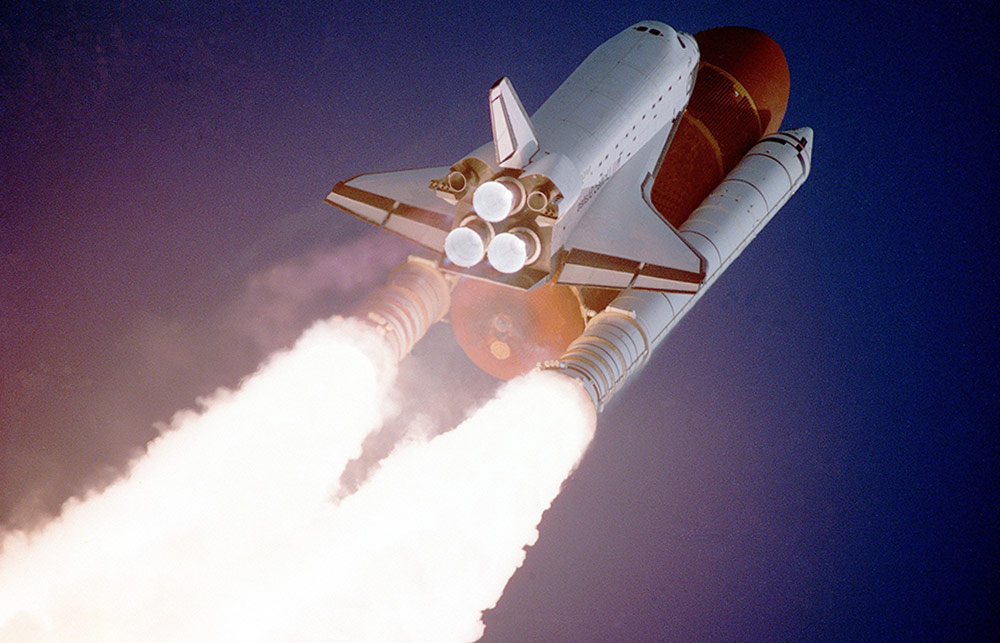
10. Creation of STEM Jobs
NASA employs more than 18,000 people. SpaceX more than 12,000. And that’s not counting outside contractors with whom those numbers at least double.
A lot of those jobs are positions for engineers, data analysts, mathematicians, physicists, astronomers, doctors, biologists, geologists, etc.
Space exploration is one of the industries that require the largest percentage of STEM (Science, Technology, Engineering, and Mathematics) jobs.
These positions require highly qualified people to fill them but are also some of the highest-paid jobs in the market. The average entry-level STEM job pays approximately 26% higher than non-STEM fields for college graduates.
So, in summary, the growing space industry creates high-paying jobs.
9. Space mining and asteroid capturing
In space, there are many valuable resources in big quantities that are scarce on Earth. For example, the asteroid Pysche 16 is estimated to contain over $700 quintillion dollars worth of gold. Enough to give each person on Earth more than $100 billion dollars. And that’s not even close to being the most valuable object.
Economists have predicted the space mining industry will create the first trillionaire.
But the real benefit for the advancement of humankind might come from a much more unlikely substance. Water.
Learning to capture asteroids full of ice and crashing them safely, could help us solve one of the biggest challenges of inhabiting planets. The lack of liquid water.
8. Space tourism industry
The biggest dream some of us have is being able to take a trip to outer space. It is the ultimate destination. And because unfortunately, not many people can become astronauts, the rest of us will have to wait until the space tourism industry develops a bit more. It is still too expensive to go to space .
In 2021, a trip in one of the first trips offered by Blue Origin, the space company created by Jeff Bezos, was auctioned. The winner paid $28 million for the privilege to be one of the first space tourists.
As reusable rockets improve, the costs of these trips will become significantly lower. Hopefully one day they’ll be within the reach for all of us.
The space tourism industry will indubitably create tens of thousands of jobs. From travel agents to pilots, to manufacturing jobs in the factories that make the rockets.
Medical benefits of space exploration
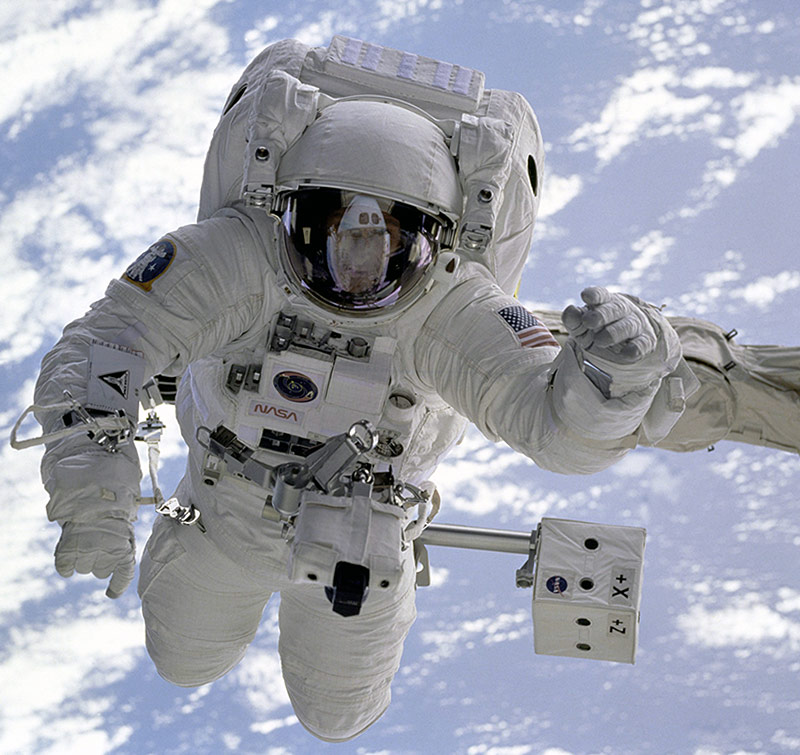
7. Learning more about the human body
Studying the effects of space travel has helped us better understand the human body. For example, analyzing the effects of zero-gravity on blood circulation led to many discoveries on how arteries age and how to prevent some types of heart failure.
The experiments and measurements of bone strength and bone loss in astronauts have helped doctors better understand osteoporosis and other bone diseases.
The medical benefits of space exploration extend to pretty much every area of the human body. From muscle physiology to mental health.
6. Improving medical assistance in remote areas
One of the biggest challenges of space travel is solving problems when you can’t send any new equipment, experts, or any other help. You have to fix things with whatever is available on the ship.
So what happens when there’s a medical emergency on a spaceship?
This question has led doctors and engineers to develop tools and machines that can perform medical procedures and diagnostics remotely.
That same technology has many applications on Earth too. It allows doctors to assist patients that are located in remote rural areas or villages that are difficult to access.
5. Development of new medical procedures
All this knowledge that has been collected has yielded many developments in medical procedures.
Some examples of medical advancements that have been created thanks to space exploration are:
- Heart pumps
- Programmable pacemakers
- Fiber-optic catheters to perform laser angioplasty
- Digital imaging breast biopsy used to detect breast cancer
- Fetus monitoring transmitters
- Cooling suits made to lower a person’s temperature
The NASA spinoff site keeps track of some of the health and medicine advancements that have been made possible thanks to space exploration.
Other benefits of space exploration
4. development of new technologies.
The space race is one of the eras that has birthed the most technological advancements in the shortest period of time. It is probably only third behind both world wars. Throughout the years, companies have found consumer uses for many of these developments. To this day we still use them in our day-to-day lives without even knowing that some NASA engineers originally developed them for the Apollo program that took humankind to the Moon.
Listing all the technologies that have been derived from space exploration would be impossible, but here are some notable examples.
- Vacuum sealed food.
- Shock-absorbing sneaker soles. That’s right, the comfy running soles were originally developed for astronaut spacesuits.
- Fireproof materials used in firefighter uniforms
- Quake-proofing technology used in bridges and buildings to resist Earthquakes
- Heat-repellent blankets. There’s a reason why they are also known as “space blankets”. Fun fact, they can also double as DIY telescope covers.
- Rechargeable hearing aids
- Autonomous drone navigation
- Modern vacuum cleaners
- The lenses used in “action cameras”
- Water purification technology
As you can see, it is important for us to keep pushing the limits of space exploration. Who knows what kind of new technologies could be developed that will make our lives easier in the future.
3. Inspire the next generation
Space exploration sparks the curiosity of children who will become the next Elon Musk, Neil Armstrong, Sally Ride, or Guion Bluford.
It inspires students to dream and gets them interested in science and technology.
Not only is this good for them as STEM jobs can secure them a comfortably future, but it also helps humanity. It is through invention, research, and knowledge that humanity will be able to overcome the big challenges it will be facing in the future.
2. Protecting Earth
We only have one planet where we can live without the help of spacesuits. It would be nice to keep it in good condition until we can figure out a way to find other habitable planets or terraform others.
To do that, we need to learn more about the dangers of space. We know about extinction events like asteroids, but that’s not the only potential threat to our survival. Solar flares, radiation, magnetic pole changes, and greenhouse effects are just some of the challenges Earth might face at some point.
Exploring space is the only way we will learn more about them so we can develop strategies and technology that could help save us from such events.
1. Increase humanity’s odds of survival
There’s one thing we are certain of about when it comes to space. If we – humanity – don’t become a space-faring civilization. We will become extinct sooner or later.
Earth will eventually become uninhabitable and will probably be devoured by the Sun as it expands during the later years of its life cycle. And that’s hoping nothing else happens before, like an asteroid impact, an ice age, atmospheric loss, climate change, or any other potential threats that could wipe us out, to put it bluntly.
Space exploration is not a luxury for the richest nations. It should be a worldwide priority and every country needs to come together in this effort. It is simply the only way we can hope to survive as a species.
We don’t know if we have millions of years or hundreds of years before any of these events happen. So it’s better to get started today.
- Space exploration can be the doorway to many growth industries such as asteroid mining or space tourism.
- Many medical advancements have been made possible thanks to the aerospace industry.
- Space exploration is critical and the only path to the survival of the human race.
Elena is a Canadian journalist and researcher. She has been looking at the sky for years and hopes to introduce more people to the wonderful hobby that is astronomy.
Related Posts

What Happened to the Mars Helicopter? (Ingenuity)
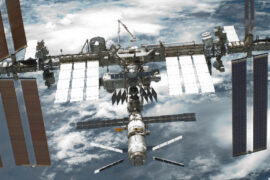
What is the Purpose of the International Space Station?
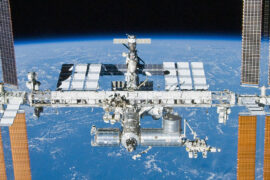
Who Owns The International Space Station?
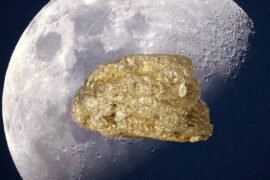
Is There Gold On The Moon? Yes! And Here’s Why It Matters.
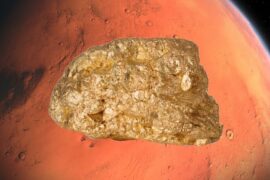
Is There Gold On Mars? Yes! And The Discovery Was Very Curious…
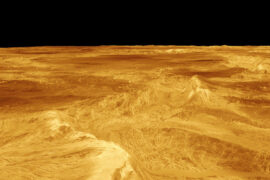
Have We Landed On Venus?
- Buying Guides
- Telescope Accessories
- Magnification Calculator
- Field of View Calculator
- Constellations
- Solar System
- Space Exploration
Type above and press Enter to search. Press Esc to cancel.
- Become A Member
- Gift Membership
- Kids Membership
- Other Ways to Give
- Explore Worlds
- Defend Earth
How We Work
- Education & Public Outreach
- Space Policy & Advocacy
- Science & Technology
- Global Collaboration
Our Results
Learn how our members and community are changing the worlds.
Our citizen-funded spacecraft successfully demonstrated solar sailing for CubeSats.
Space Topics
- Planets & Other Worlds
- Space Missions
- Space Policy
- Planetary Radio
- Space Images
The Planetary Report
The eclipse issue.
Science and splendor under the shadow.
Get Involved
Membership programs for explorers of all ages.
Get updates and weekly tools to learn, share, and advocate for space exploration.
Volunteer as a space advocate.
Support Our Mission
- Renew Membership
- Society Projects
The Planetary Fund
Accelerate progress in our three core enterprises — Explore Worlds, Find Life, and Defend Earth. You can support the entire fund, or designate a core enterprise of your choice.
- Strategic Framework
- News & Press
The Planetary Society
Know the cosmos and our place within it.
Our Mission
Empowering the world's citizens to advance space science and exploration.
- Explore Space
- Take Action
- Member Community
- Account Center
- “Exploration is in our nature.” - Carl Sagan
The Planetary Society • Aug 30, 2021
Why space exploration is always worthwhile
Your guide to advocating for space in a complicated world.
Most people who love space and believe in exploration have probably heard this once or twice: “We shouldn’t waste money on space exploration when there are problems to deal with here on Earth.”
While public health concerns, social injustices, climate change, and other urgent issues are important to address, solving these problems doesn’t depend on defunding space programs.
This can be a difficult conversation to navigate, so we’ve outlined a few ideas here that you can share when advocating for space.
Space research isn’t as expensive as people think
Many countries around the world invest in space science and exploration as a balanced part of their total federal budget. Public opinion research has shown that people estimate NASA to take up as much as a quarter of the U.S. federal budget, but in fact, NASA’s budget only represents about 0.5% of the total federal budget and the proportion is even smaller for other spacefaring nations . The correct information may go a long way to reassuring critics that space spending isn’t eating up as many public resources as they think.
The United States government spent approximately $6.6 trillion in fiscal year 2020, of which just 0.3% ($22.6 billion) was provided to NASA. In this chart, shades of blue represent mandatory spending programs; shades of orange are discretionary programs that require annual appropriations by Congress. "Defense and related" includes both the Department of Defense and Veterans Affairs. Source: Office of Management and Budget Historical Tables 8.5 and 8.7.
Space spending pays off
If someone is arguing that public funds should be spent on solving the world’s problems, they should know that money spent on NASA positively impacts the U.S. economy . We get the same kind of payoff for space spending in other countries. Spending on space supports highly skilled jobs, fuels technology advancements with practical applications, and creates business opportunities that feed back into the economy. This in turn grows the pool of public money that can be spent on solving the world’s most pressing problems.
Space research directly impacts Earthly problems
When people apply themselves to the challenges of exploring space, they make discoveries that can help the world in other ways too. Studying how we might grow food in orbit or on Mars yields insights into growing food in extreme conditions on Earth , generating knowledge that can help mitigate the impacts of climate change. Medical research conducted on the International Space Station helps us understand the human body in new ways, helping save lives and improve quality of life .
This content is hosted by a third party (youtube.com), which uses marketing cookies. Please accept marketing cookies to watch this video.
Studying space helps us understand our own world
Studying the cosmos gives us an important perspective shift. When we learn about what lies beyond Earth, it gives us context for understanding our own planet. Studying the other worlds of our solar system and beyond makes it clear that Earth is a precious oasis for life. When we sent spacecraft to Venus we saw how a runaway greenhouse effect turned the world from a habitable planet to an absolute hellscape. When astronauts travel into space they see just how thin and tenuous Earth’s atmosphere is, appreciating the fragile balance in which we live . A cosmic perspective underscores the importance of protecting our planet’s habitability and encourages investment in that effort.
Studying space may one day save us all
All the social and environmental progress in the world won't help us if an asteroid impacts the Earth. We have to explore space to find and study the asteroids and comets in our cosmic neighborhood if we want to make sure we can defend our planet if an object ever heads our way.
Space is inspiring
Not every child who dreams of becoming an astronaut will get that opportunity. This is a sad truth that many of us know from experience. But to be inspired to aim for something so grand gives kids the motivation to study hard and gain skills in science, engineering, medicine, or other fields that benefit humanity and directly help overcome problems that we face as a species.
And inspiration isn’t just for kids. When we marvel at the beauty of Jupiter’s clouds or the mystery of Enceladus’ oceans , we get an opportunity to appreciate the wonder and majesty of this cosmos that we inhabit. The idea that life might exist elsewhere in the universe reminds us that we might not be the only planet struggling to achieve balance, justice, and sustainability. And even in the bleakest of times, there’s something beautiful about still striving to achieve something great and discover something that could change how we see ourselves and our cosmos forever.
There’s plenty of room at the table
There’s no denying that there are many important issues facing humanity that need fixing. But to deal with those problems doesn’t mean we have to stop looking up, stop exploring, and stop making discoveries.
Human civilization has astonishing capacity, and we can do more than one important thing at a time. If someone thinks that a particular issue should get more attention and investment, they can and should advocate for that. The problems we face don’t persist because we’re spending money on space science and exploration. And there’s no reason to pit our aspirations against one another.
Let’s Go Beyond The Horizon
Every success in space exploration is the result of the community of space enthusiasts, like you, who believe it is important. You can help usher in the next great era of space exploration with your gift today.
For full functionality of this site it is necessary to enable JavaScript. Here are instructions on how to enable JavaScript in your web browser .
Why We Should Be Spending More on Space Travel

L et’s stipulate one thing: there’s absolutely no reason for us to go to space. It does nothing to feed us, to clothe us, to protect us, to heal us. It’s dangerous and hideously expensive too, a budget-busting luxury that policy makers and administrators have spent decades trying to defend—always unsuccessfully because the fact is, there’s no practical defense for it. So stand down the rockets, take down the space centers, pocket the money and let’s move on. Still want the adventure of going to space? That’s what they make movies for.
Now that we’ve established that, let’s stipulate the opposite: Space is precisely where the human species ought to be going. We accept that we’re a warring species. We accept that we’re a loving species. We accept that we’re an artistic and inventive and idiosyncratic species. Then we surely must accept that we’re a questing species. Questing species don’t much care for being stuck on one side of an ocean and so they climb aboard boats—indeed they invent boats—to cross it. They don’t much care for having their path blocked by a mountain and so they climb it for no reason other than finding out what’s on the other side. Accept that, and you can’t not accept that we have to embrace space.
April 12 marks the 60th anniversary of the day Yuri Gagarin became the first human being in space , taking off in his Vostok 1 spacecraft, spending 88 minutes making a single orbit of the Earth, and returning home to a species that seemed forever been changed by his efforts. The date will mark, too, the 60th anniversary of the by-now familiar argument that journeys like Gagarin’s and all of the ones that followed achieve nothing that can be touched and pointed to as a practical dividend of the effort made and the resources expended.
I found myself turning the old debate this way and that over the last week, when I was reading a column in the Guardian with the provocative headline, “Revive the U.S. space program? How about not,” by essayist Nicholas Russell. It opens with a mention of Gil Scott-Heron’s 1970 spoken word poem, “Whitey on the Moon,” which compellingly lamented the hard social truth that the U.S. was spending $24 billion in 1960s money on the Apollo program at the same time 10% of Americans were living in poverty, with Blacks suffering at three times the rate of whites.
“Was all that money I made last year (for Whitey on the moon?)” Scott-Heron wrote. “How come there ain’t no money here? (Hm! Whitey’s on the moon.)”
Russell goes on to cite the estimated cost of the new Artemis lunar program , which some analysts have placed at $30 billion; the role—a troubling one as he sees it—of the military in so many space projects, and the ongoing scourge of racism and inequality on Earth that persists while we still keep looking spaceward. Then he mentions, by way of caution, a University of Arizona proposal to send seed, spore, sperm and egg samples of 6.7 million terrestrial species to the moon as a sort of space ark in case life on Earth should come to an end. “When the vastness of space is cited as a means of escape from disaster, it’s exceedingly difficult not to believe nihilism acts as the prime motivator,” Russell argues. “Rather than sparking inspiration, it speaks of blatant fatalism about what is worth saving, a preference for the lofty and unpopulated … with delusions of innovation and heroism.”
Russell is right about some things—especially about the continuing blight of racism. But expenditures on space and expenditures on social programs have never been a zero-sum proposition, any more than any dollar the U.S. government spends on anything at all—the military, farm subsidies, tax cuts for corporations—is by definition a dollar not spent on something else. And the Artemis price tag is indeed high—but only if you look at it as a standalone figure. In the context of the federal budget? NASA funding currently accounts for just 0.4% of the total the government spends each year—down from 4% in the golden era of Apollo. The military’s role in the space program is inevitable, even if Russell sees it as regrettable. Rockets are rockets, after all, and physics is physics, and if the first machines that blasted humans off the Earth were originally designed as ballistic missiles, well, that was what the U.S. and the U.S.S.R. had on the shelf. What’s more, every Soviet R-7 rocket or American Atlas that was used to send an astronaut or cosmonaut to orbit was one fewer that could be used in a theater of war.
And as for that space ark? Well yes, it does suggest a certain fatalism. But the fact is, we are eminently capable of screwing the global pooch, to paraphrase the old Mercury astronauts. Unless you’re confident that no autocrat or hermit king with nuclear weapons and a button in reach won’t do something impulsive, storing the Earth’s genetic essence for safekeeping does not seem like a completely insane idea.
That doesn’t mean space exploration is inherently nihilistic, however. Look at the old footage of the global reaction to the Apollo 11 moon landing . Watch the worldwide relief when the Apollo 13 crew —three people the vast majority of the planet had never met—made it home safely. Consider the reaction today when a rover lands on Mars or a spacecraft whizzes past Pluto or a pair of women aboard the space station perform the first all-female spacewalk.
Yes, we can live without traveling to space. Indeed, we did perfectly well over all of the millennia that preceded April 12, 1961. We can meet most of our needs when we stay on Earth—we can raise our families and earn our salaries and feed our bellies. But we feed something less literal, more lyrical when we extend ourselves as far as we can. Once that meant crossing an ocean. Now it means more. Space is out there—and we should be too.
More Must-Reads From TIME
- Exclusive: Google Workers Revolt Over $1.2 Billion Contract With Israel
- Jane Fonda Champions Climate Action for Every Generation
- Stop Looking for Your Forever Home
- The Sympathizer Counters 50 Years of Hollywood Vietnam War Narratives
- The Bliss of Seeing the Eclipse From Cleveland
- Hormonal Birth Control Doesn’t Deserve Its Bad Reputation
- The Best TV Shows to Watch on Peacock
- Want Weekly Recs on What to Watch, Read, and More? Sign Up for Worth Your Time
Write to Jeffrey Kluger at [email protected]
You May Also Like
- Subscribe to BBC Science Focus Magazine
- Previous Issues
- Future tech
- Everyday science
- Planet Earth
- Newsletters
Everything you need to know about space travel (almost)
We're a long way from home...
Paul Parsons
When did we first start exploring space?
The first human-made object to go into space was a German V2 missile , launched on a test flight in 1942. Although uncrewed, it reached an altitude of 189km (117 miles).
Former Nazi rocket scientists were later recruited by both America and Russia (often at gunpoint in the latter case), where they were instrumental in developing Intercontinental Ballistic Missiles (ICBMs) – rockets capable of carrying nuclear weapons from one side of the planet to the other.

It was these super-missiles that formed the basis for the space programmes of both post-war superpowers. As it happened, Russia was the first to reach Earth orbit, when it launched the uncrewed Sputnik 1 in October 1957, followed a month later by Sputnik 2, carrying the dog Laika – the first live animal in space.
The USA sent its first uncrewed satellite, Explorer 1, into orbit soon after, in January 1958. A slew of robotic spaceflights followed, from both sides of the Atlantic, before Russian cosmonaut Yuri Gagarin piloted Vostok 1 into orbit on 12 April 1961, to become the first human being in space . And from there the space race proper began, culminating in Neil Armstrong and Buzz Aldrin becoming the first people to walk on the Moon as part of NASA's Apollo programme .
Why is space travel important?
Space exploration is the future. It satisfies the human urge to explore and to travel, and in the years and decades to come it could even provide our species with new places to call home – especially relevant now, as Earth becomes increasingly crowded .
Extending our reach into space is also necessary for the advancement of science. Space telescopes like the Hubble Space Telescope and probes to the distant worlds of the Solar System are continually updating, and occasionally revolutionising, our understanding of astronomy and physics.
- Subscribe to the Science Focus Podcast on these services: Acast , iTunes , Stitcher , RSS , Overcast
But there are also some very practical reasons, such as mining asteroids for materials that are extremely rare here on Earth.
One example is the huge reserve of the chemical isotope helium-3 thought to be locked away in the soil on the surface of the Moon . This isotope is a potential fuel for future nuclear fusion reactors – power stations that tap into the same source of energy as the Sun. Unlike other fusion fuels, helium-3 gives off no hard-to-contain and deadly neutron radiation.
However, for this to happen the first challenge to overcome is how to build a base on the Moon. In 2019, China's Chang’e 4 mission marked the beginning of a new space race to conquer the Moon, signalling their intent to build a permanent lunar base , while the NASA Artemis mission plans to build a space station, called Lunar Orbital Platform-Gateway , providing a platform to ferry astronauts to the Moon's surface.
Could humans travel into interstellar space and how would we get there?
It’s entirely feasible that human explorers will visit the furthest reaches of our Solar System. The stars, however, are another matter. Interstellar space is so vast that it takes light – the fastest thing we know of in the Universe – years, centuries and millennia to traverse it. Faster-than-light travel may be possible one day, but is unlikely to become a reality in our lifetimes.
It’s not impossible that humans might one day cross this cosmic gulf, though it won’t be easy. The combustion-powered rocket engines of today certainly aren’t up to the job – they just don’t use fuel efficiently enough. Instead, interstellar spacecraft may create a rocket-like propulsion jet using electric and magnetic fields. This so-called ‘ ion drive ’ technology has already been tested aboard uncrewed Solar System probes.

Another possibility is to push spacecraft off towards the stars using the light from a high-powered laser . A consortium of scientists calling themselves Breakthrough Starshot is already planning to send a flotilla of tiny robotic probes to our nearest star, Proxima Centauri, using just this method.
Though whether human astronauts could survive such punishing acceleration, or the decades-long journey through deep space, remains to be seen.
How do we benefit from space exploration?
Pushing forward the frontiers of science is the stated goal of many space missions . But even the development of space travel technology itself can lead to unintended yet beneficial ‘spin-off’ technologies with some very down-to-earth applications.
Notable spin-offs from the US space programme, NASA, include memory foam mattresses, artificial hearts, and the lubricant spray WD-40. Doubtless, there are many more to come.
Read more about space exploration:
- The next giant leaps: The UK missions getting us to the Moon
- Move over, Mars: why we should look further afield for future human colonies
- Everything you need to know about the Voyager mission
- 6 out-of-this-world experiments recreating space on Earth
Space exploration also instils a sense of wonder, it reminds us that there are issues beyond our humdrum planet and its petty squabbles, and without doubt it helps to inspire each new generation of young scientists. It’s also an insurance policy. We’re now all too aware that global calamities can and do happen – for instance, climate change and the giant asteroid that smashed into the Earth 65 million years ago, leading to the total extinction of the dinosaurs .
The lesson for the human species is that we keep all our eggs in one basket at our peril. On the other hand, a healthy space programme, and the means to travel to other worlds, gives us an out.
Is space travel dangerous?
In short, yes – very. Reaching orbit means accelerating up to around 28,000kph (17,000mph, or 22 times the speed of sound ). If anything goes wrong at that speed, it’s seldom good news.
Then there’s the growing cloud of space junk to contend with in Earth's orbit – defunct satellites, discarded rocket stages and other detritus – all moving just as fast. A five-gram bolt hitting at orbital speed packs as much energy as a 200kg weight dropped from the top of an 18-storey building.

And getting to space is just the start of the danger. The principal hazard once there is cancer-producing radiation – the typical dose from one day in space is equivalent to what you’d receive over an entire year back on Earth, thanks to the planet’s atmosphere and protective magnetic field.
Add to that the icy cold airless vacuum , the need to bring all your own food and water, plus the effects of long-duration weightlessness on bone density, the brain and muscular condition – including that of the heart – and it soon becomes clear that venturing into space really isn’t for the faint-hearted.
When will space travel be available to everyone?
It’s already happening – that is, assuming your pockets are deep enough. The first self-funded ‘space tourist’ was US businessman Dennis Tito, who in 2001 spent a week aboard the International Space Station (ISS) for the cool sum of $20m (£15m).
Virgin Galactic has long been promising to take customers on short sub-orbital hops into space – where passengers get to experience rocket propulsion and several minutes of weightlessness, before gliding back to a runway landing on Earth, all for $250k (£190k). In late July 2020, the company unveiled the finished cabin in its SpaceShipTwo vehicle, suggesting that commercial spaceflights may begin shortly.

Meanwhile, Elon Musk’s SpaceX , which in May 2020 became the first private company to launch a human crew to Earth orbit aboard the Crew Dragon , plans to offer stays on the ISS for $35k (£27k) per night. SpaceX is now prototyping its huge Starship vehicle , which is designed to take 100 passengers from Earth to as far afield as Mars for around $20k (£15k) per head. Musk stated in January that he hoped to be operating 1,000 Starships by 2050.
10 Short Lessons in Space Travel by Paul Parsons is out now (£9.99, Michael O'Mara)
- Buy now from Amazon UK , Foyles , WH Smith and Wordery
Share this article

- Terms & Conditions
- Privacy policy
- Cookies policy
- Code of conduct
- Magazine subscriptions
- Manage preferences
Language selection
- Français fr
Everyday benefits of space exploration
Some examples of how space benefits Canadians and all of humanity.

Improving health care
Experiments performed in space help us understand health problems on Earth.
Protecting our planet and our environment
Satellites provide data on climate change, measure pollution, and help protect our planet.
Creating scientific and technical jobs
The space sector generates high-tech jobs for Canadians.
Improving our day-to-day lives
Space technologies improve products we use every day, weather forecasts, and communications worldwide.
Enhancing safety on Earth
Satellites data can be used to predict natural disasters and to support emergency relief efforts.
Making scientific discoveries
Scientific breakthroughs are challenging our assumptions and pushing our boundaries by exploring the unknown.
Sparking youth's interest in science
Astronauts encourage young people to study science, technology, engineering and mathematics.
Cooperating with countries around the world
Canada is a partner of the International Space Station, a research laboratory in space.
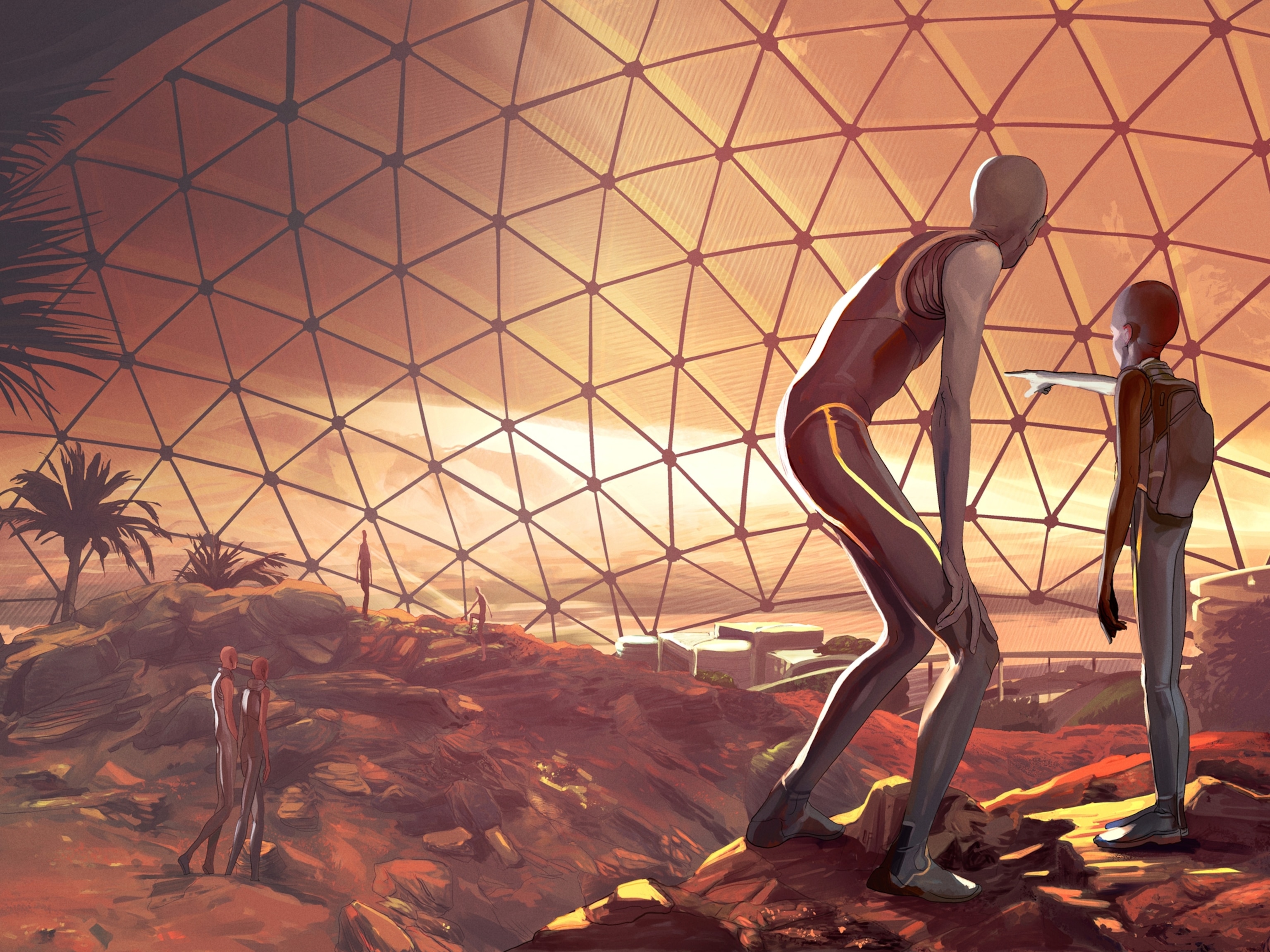
The future of spaceflight—from orbital vacations to humans on Mars
NASA aims to travel to the moon again—and beyond. Here’s a look at the 21st-century race to send humans into space.
Welcome to the 21st-century space race, one that could potentially lead to 10-minute space vacations, orbiting space hotels , and humans on Mars. Now, instead of warring superpowers battling for dominance in orbit, private companies are competing to make space travel easier and more affordable. This year, SpaceX achieved a major milestone— launching humans to the International Space Station (ISS) from the United States —but additional goalposts are on the star-studded horizon.
Private spaceflight
Private spaceflight is not a new concept . In the United States, commercial companies played a role in the aerospace industry right from the start: Since the 1960s, NASA has relied on private contractors to build spacecraft for every major human spaceflight program, starting with Project Mercury and continuing until the present.
Today, NASA’s Commercial Crew Program is expanding on the agency’s relationship with private companies. Through it, NASA is relying on SpaceX and Boeing to build spacecraft capable of carrying humans into orbit. Once those vehicles are built, both companies retain ownership and control of the craft, and NASA can send astronauts into space for a fraction of the cost of a seat on Russia’s Soyuz spacecraft.
SpaceX, which established a new paradigm by developing reusable rockets , has been running regular cargo resupply missions to the International Space Station since 2012. And in May 2020, the company’s Crew Dragon spacecraft carried NASA astronauts Doug Hurley and Bob Behnken to the ISS , becoming the first crewed mission to launch from the United States in nearly a decade. The mission, called Demo-2, is scheduled to return to Earth in August. Boeing is currently developing its Starliner spacecraft and hopes to begin carrying astronauts to the ISS in 2021.
Other companies, such as Blue Origin and Virgin Galactic , are specializing in sub-orbital space tourism. Test launch video from inside the cabin of Blue Origin’s New Shepard shows off breathtaking views of our planet and a relatively calm journey for its first passenger, a test dummy cleverly dubbed “Mannequin Skywalker.” Virgin Galactic is running test flights on its sub-orbital spaceplane , which will offer paying customers roughly six minutes of weightlessness during its journey through Earth’s atmosphere.
With these and other spacecraft in the pipeline, countless dreams of zero-gravity somersaults could soon become a reality—at least for passengers able to pay the hefty sums for the experience.
Early U.S. Spaceflight
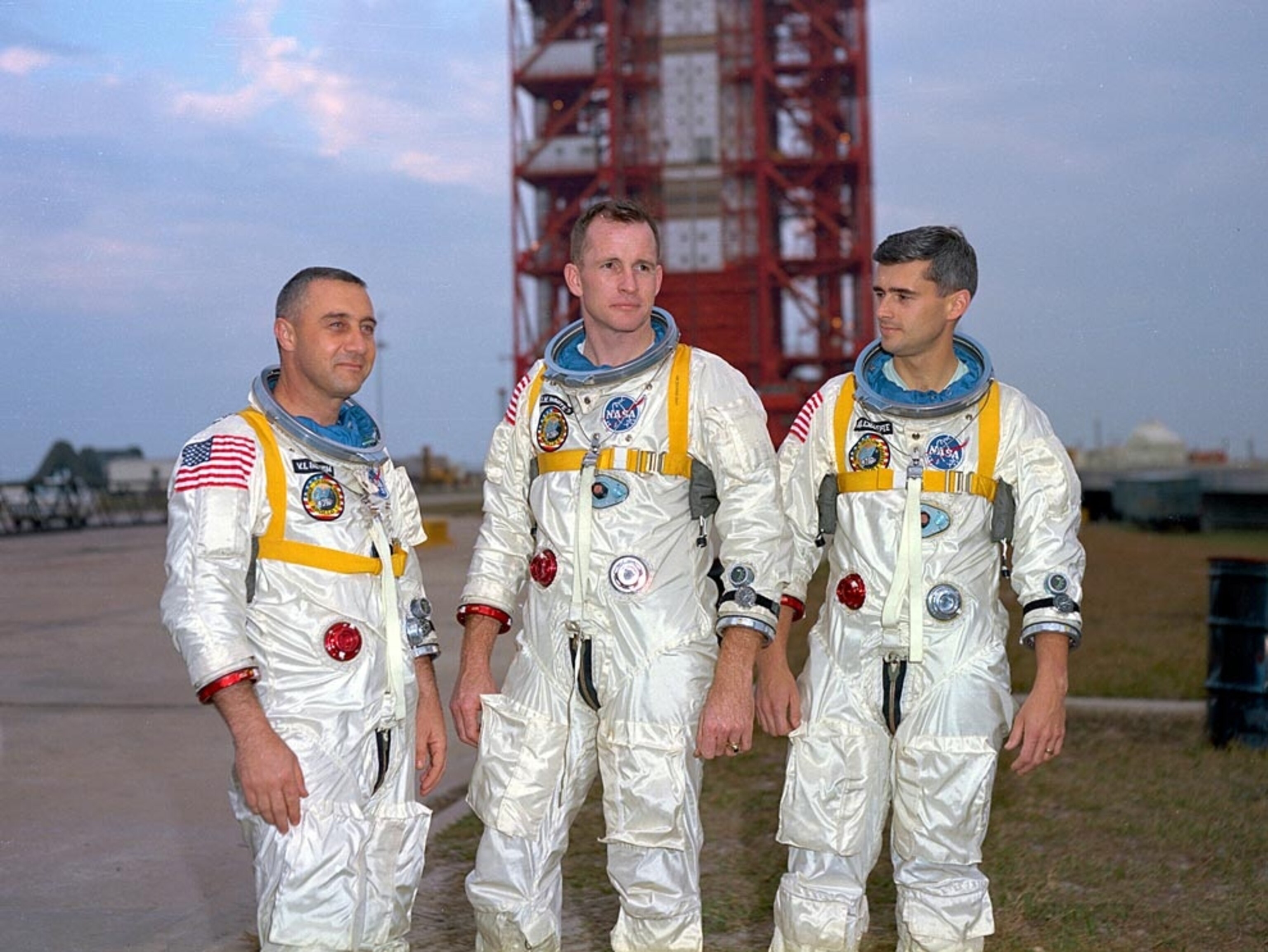
Looking to the moon
Moon missions are essential to the exploration of more distant worlds. After a long hiatus from the lunar neighborhood, NASA is again setting its sights on Earth’s nearest celestial neighbor with an ambitious plan to place a space station in lunar orbit sometime in the next decade. Sooner, though, the agency’s Artemis program , a sister to the Apollo missions of the 1960s and 1970s, is aiming to put the first woman (and the next man) on the lunar surface by 2024.

FREE BONUS ISSUE
Extended lunar stays build the experience and expertise needed for the long-term space missions required to visit other planets. As well, the moon may also be used as a forward base of operations from which humans learn how to replenish essential supplies, such as rocket fuel and oxygen, by creating them from local material.
You May Also Like

In a first, NASA Mars lander feels shockwaves from meteor impacts

SpaceX takes 4 passengers to orbit—a glimpse at private spaceflight’s future

Why go back to the moon? NASA’s Artemis program has even bigger ambitions
Such skills are crucial for the future expansion of human presence into deeper space, which demands more independence from Earth-based resources. And although humans have visited the moon before, the cratered sphere still harbors its own scientific mysteries to be explored—including the presence and extent of water ice near the moon's south pole, which is one of the top target destinations for space exploration .
NASA is also enlisting the private sector to help it reach the moon. It has awarded three contracts to private companies working on developing human-rated lunar landers—including both Blue Origin and SpaceX. But the backbone of the Artemis program relies on a brand new, state-of-the-art spacecraft called Orion .
Archival Photos of Spaceflight
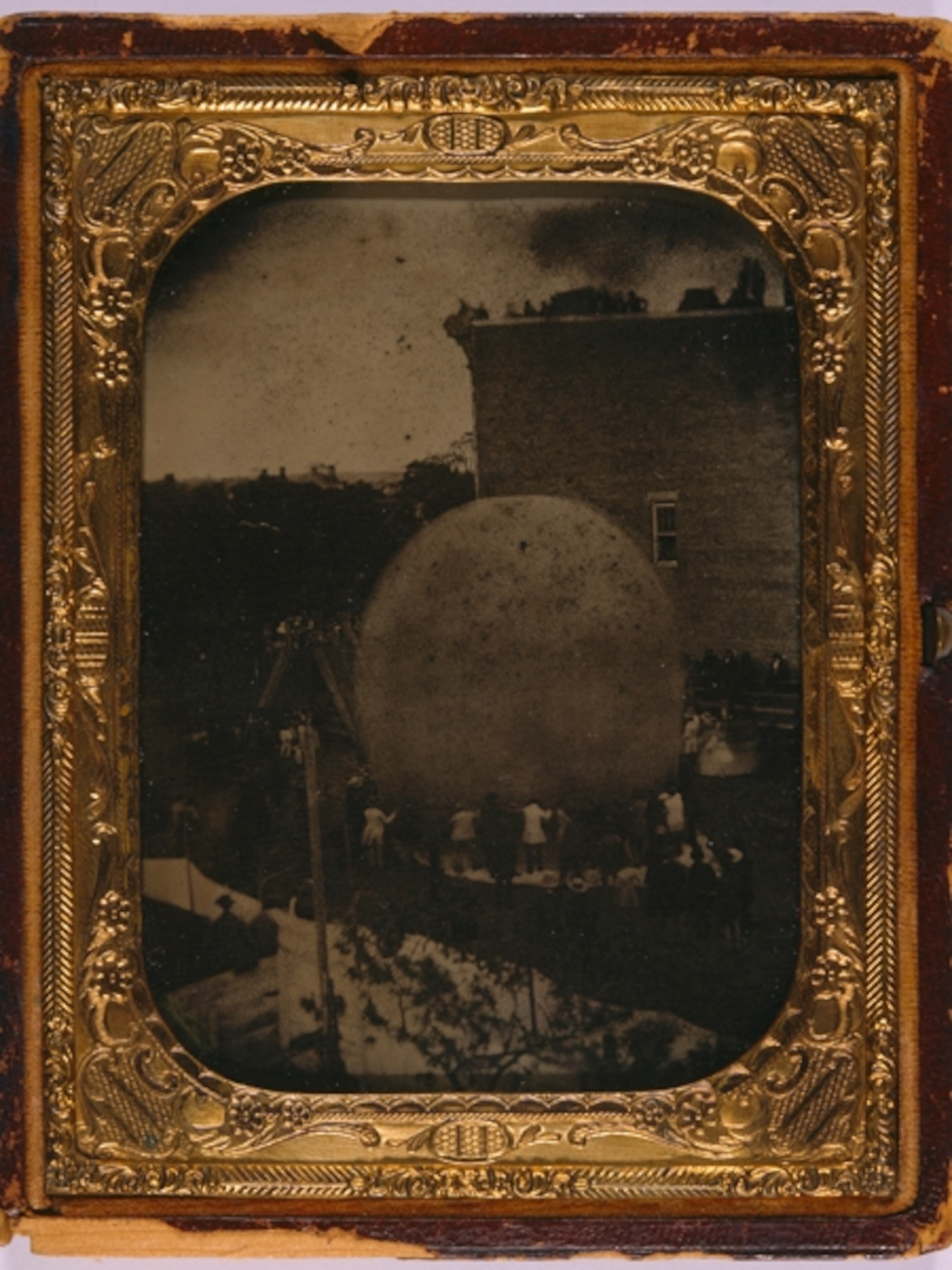
Currently being built and tested, Orion—like Crew Dragon and Starliner—is a space capsule similar to the spacecraft of the Mercury, Gemini, and Apollo programs, as well as Russia’s Soyuz spacecraft. But the Orion capsule is larger and can accommodate a four-person crew. And even though it has a somewhat retro design, the capsule concept is considered to be safer and more reliable than NASA’s space shuttle—a revolutionary vehicle for its time, but one that couldn’t fly beyond Earth’s orbit and suffered catastrophic failures.
Capsules, on the other hand, offer launch-abort capabilities that can protect astronauts in case of a rocket malfunction. And, their weight and design mean they can also travel beyond Earth’s immediate neighborhood, potentially ferrying humans to the moon, Mars, and beyond.
A new era in spaceflight
By moving into orbit with its Commercial Crew Program and partnering with private companies to reach the lunar surface, NASA hopes to change the economics of spaceflight by increasing competition and driving down costs. If space travel truly does become cheaper and more accessible, it’s possible that private citizens will routinely visit space and gaze upon our blue, watery home world—either from space capsules, space stations, or even space hotels like the inflatable habitats Bigelow Aerospace intends to build .
The United States isn’t the only country with its eyes on the sky. Russia regularly launches humans to the International Space Station aboard its Soyuz spacecraft. China is planning a large, multi-module space station capable of housing three taikonauts, and has already launched two orbiting test vehicles—Tiangong-1 and Tiangong-2, both of which safely burned up in the Earth’s atmosphere after several years in space.
Now, more than a dozen countries have the ability to launch rockets into Earth orbit. A half-dozen space agencies have designed spacecraft that shed the shackles of Earth’s gravity and traveled to the moon or Mars. And if all goes well, the United Arab Emirates will join that list in the summer of 2020 when its Hope spacecraft heads to the red planet . While there are no plans yet to send humans to Mars, these missions—and the discoveries that will come out of them—may help pave the way.
Related Topics
- SPACE EXPLORATION
- SCIENCE AND TECHNOLOGY

Second SpaceX megarocket launch ends with another explosion. What happens next?

Why did India land near the moon’s south pole?

U.S. returns to the moon as NASA's Odysseus successfully touches down

In the Arizona desert, NASA prepares for walking on the moon

The moon’s darkest corners are a mystery. This image offers a stunning new glimpse.
- Environment
- Paid Content
History & Culture
- History Magazine
- History & Culture
- Mind, Body, Wonder
- Terms of Use
- Privacy Policy
- Your US State Privacy Rights
- Children's Online Privacy Policy
- Interest-Based Ads
- About Nielsen Measurement
- Do Not Sell or Share My Personal Information
- Nat Geo Home
- Attend a Live Event
- Book a Trip
- Inspire Your Kids
- Shop Nat Geo
- Visit the D.C. Museum
- Learn About Our Impact
- Support Our Mission
- Advertise With Us
- Customer Service
- Renew Subscription
- Manage Your Subscription
- Work at Nat Geo
- Sign Up for Our Newsletters
- Contribute to Protect the Planet
Copyright © 1996-2015 National Geographic Society Copyright © 2015-2024 National Geographic Partners, LLC. All rights reserved
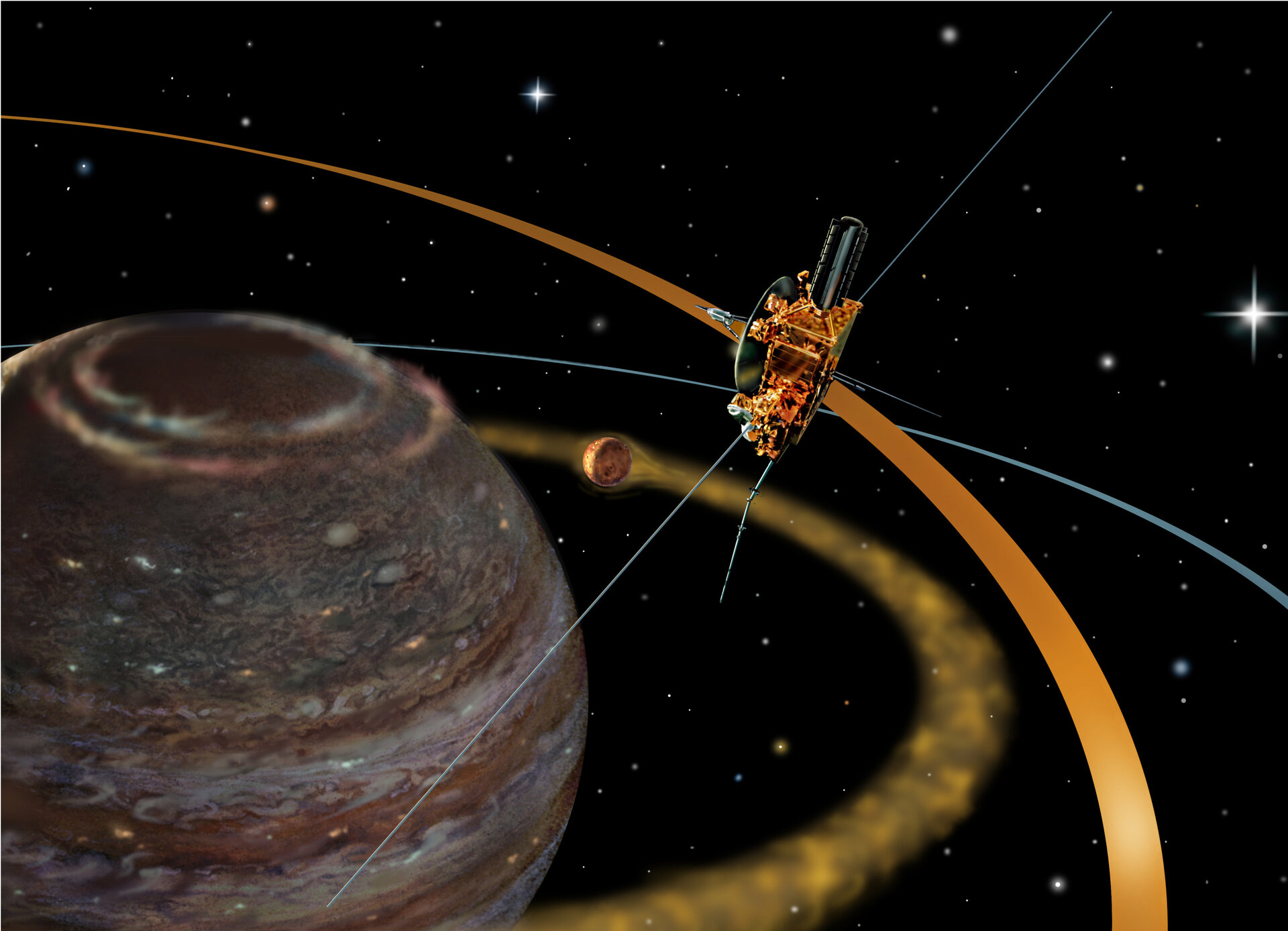
Why explore space?
Why should we explore space? Why should money, time and effort be spent researching something with apparently so few benefits? Why should resources be spent on space rather than on conditions and people on Earth?
Perhaps the best answer lies in our history. What made our ancestors move from the trees onto the plains? Did a wider distribution of our species offer a better chance of survival?
Nearly all successful civilisations have been willing to explore. In exploring, the dangers of surrounding areas may be identified and prepared for. Without knowledge, these dangers have the ability to harm us. With knowledge, their effects or consequences may be lessened.

While many resources are spent on what seems a small return, the exploration of space allows new resources to be created. Resources translate into success at survival. Resources may be more than physical assets.
Knowledge or techniques acquired in exploring or preparing to explore always filter from the developers to the general population.
Techniques may be medical applications, such as new drugs or ways of living to increase the quantity or the quality of time lived. Techniques may be social, allowing the people in a society to better understand those within or outside that culture.

ESA’s space programme is a strategic asset. ESA does what individual European nations cannot do on their own.
Scientists from European nations can function at world-class level in their specialist fields, in co-operation rather than competition.
By studying alien worlds, such as Venus, Mars or Saturn’s moon Titan, we can place our own world in context. ESA’s exploration of the Solar System is focused on understanding the Earth’s relationship with the other planets, essential stepping stones for exploring the wider Universe.
While space may hold many wonders and explanations of how the universe was formed or how it works, it also holds dangers. The chance of a large asteroid or comet hitting the Earth is small. But given time, it will happen.
Some explanations for extinctions and evolution include strikes by asteroids or comets. Our technology is reaching the point where we can detect such a threat and might be able to do something about it.
The dangers exist and knowledge can allow us as a species to survive. Without the ability to reach out across space, the chance to save ourselves might not exist.
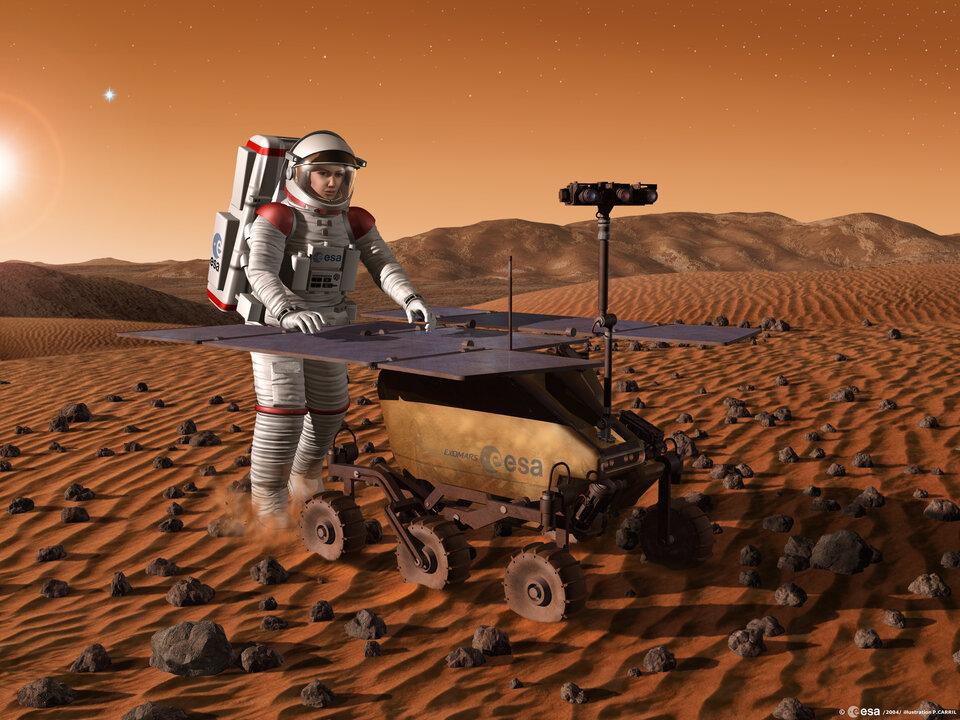
Earth is the only planet known to sustain life, but our ability to adapt could eventually allow us to inhabit other planets and moons.
Our lifestyles would be different, but human life and cultures have adapted in the past and surely could in the future. Space allows us to expand and succeed.
Thank you for liking
You have already liked this page, you can only like it once!
Related Links

About Exploring space

Our environment in the context of space
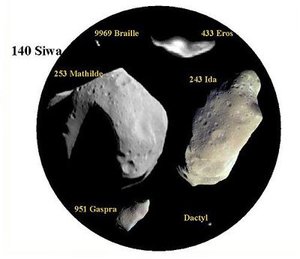
Threats from space

19 Advantages and Disadvantages of Space Exploration
One of the reasons why fictional universes like those in Star Wars or Star Trek are popular is because they show us a reality where hope is possible anywhere. In the former, space exploration leads to an independent spirit where the fate of one’s culture and identity are at risk of being overrun by a zealous government. In the latter, humanity overcomes its core problems of conflict, hunger, and poverty to become great explorers of space.
Numerous science-fiction novels and stories over the years show us that exploring space could be exciting and profitable. What we don’t always discuss are the potential dangers and expenses that such an action would bring to us as well. When European settlers came to the Caribbean as explorers, some tribes lost up to 90% of their population because of the introduction of new diseases.
If we were to begin exploring alien worlds or encountering new life, our entire planet could experience the same problems as those island tribes.
That is why it is critical to examine the advantages and disadvantages of space exploration before launching these missions to ensure that we can all achieve the best possible result.
List of the Advantages of Space Exploration
1. Space exploration allows us to prepare for potential hazards. The universe is a vast place where hidden dangers could be lurking almost anywhere. Even if you consider only our solar system, there are asteroid and comet threats which could devastate our planet if an impact were to occur. Exploring space gives us an opportunity to locate these hazards in advance to prepare an encounter that could help to preserve our race.
Then there are the interstellar items to consider. Oumuamua, or 11/2018 U1, was discovered by the Pan-STARRS1 telescope in 2017 by the University of Hawaii through funding from the Near-Earth Object Observations Program. It was originally thought to be an asteroid, then a comet since it was accelerating, and up to 10 times as long as it was wide. These items could create interstellar impacts as well.
2. It gives us more information about our solar system, galaxy, and universe. When we take on the effort to start exploring space, then we can discover new truths about our planet and culture simultaneously. The information we obtain from these studies can then be applied to our STEM resources here at home. NASA technologies that were originally developed for space programs include infrared ear thermometers, LED lighting, ventricular-assist devices, anti-icing systems, and even temper foam.
Because it requires us to innovate to reach to the stars, our efforts to solve critical problems create opportunities to make life better here on our planet at the same time.
3. Exploring space is one of the few human endeavors that crosses borders. There are currently 72 countries who claim to have a space program, but there are only three which have an operating government space agency: China, Russia, and the United States. Despite the political conflicts that occur between these nations, their capability of producing human spaceflight provides the gold standard for future exploration efforts. Only 14 of the 72 nations who operate in this space even have a basic launch capacity and six (adding Europe, India, and Japan) have the capability to launch or recover multiple satellites.
Because of the expenses and resources necessary to achieve space flight, the remaining nations work together with those who have the capability of a full launch to manage this aspect of human existence. This endeavor is one of the few ways that humans from all nations cooperate without conflict.
4. We can see humanity in a different way with space exploration. Carl Sagan suggested that Voyager 1 take a picture of Earth while it was 4 billion miles away at more than 30 degrees above the ecliptic plane. In that image, our planet appears as a 0.12 pixel crescent. All of our conflicts, political battles, successes, failures, love, loss, and life occur on this one-tenth of a pixel. In the scope of a universal lens, we are but one small point of light amount countless others.
“Look again at that dot,” wrote Sagan. “That’s here. That’s home. That’s us. On it everyone you love, everyone you know, everyone you ever heard of, every human being who ever was, lived out their lives. The aggregate of our joy and suffering, thousands of confident religions, ideologies, and economic doctrines, every hunter and forager, every hero and coward, every creator and destroyer, every king and peasant… every saint and sinner in the history of our species lived there – on a mote of dust suspended in a sunbeam.”
5. Space exploration provides us access to new raw materials. When we began to launch satellites into space, it allowed us to find new raw material deposits on our planet that we could access to make life easier here. If we apply this technology as an extension to the rest of our solar system, then it gives us the same benefit to find minerals, precious metals, and even new materials that we can use. Although the expense of exploring space is admittedly high, this advantage gives us a way to offset those costs somewhat. There is even the potential that it could become profitable one day if we can provide these efforts with enough capital.
6. Investments into space exploration create real economic benefits at home. The governments which provide the majority of our space exploration infrastructure employ over 20,000 people per agency who make direct positive economic impacts on their community. There are private companies who look at the potential benefits of this industry and contribute to this advantage as well, such as SpaceX and their thousands of staff.
People from all walks of life contribute to space exploration every day, ranging from astronomers to actual rocket scientists. Even though many of these programs receive taxpayer funding, the wages, manufacturing, and indirect investments contribute over 70% more in overall value at the local level compared to each dollar spent in the United States. These opportunities allows us to explore many different fields of study in addition to what is waiting in the universe as well.
7. Anyone can become a space explorer. Space exploration doesn’t need to involve starships, space stations, or intergalactic travel. If you own a telescope and can look up at the sky, then you can embrace this element of human existence. Our scientists have taken this advantage to the next level with the Hubble Space Telescope, which has made over 1 million observations in almost 30 years of service. We have made some incredible discoveries with this technology already.
- We have a better idea about the age of the universe (around 13.7 billion years).
- Images of the deep universe show that there are thousands of galaxies out there.
- It helped us to discover four of the five moons that orbit Pluto.
- We have a better understanding of planetary seasons in our universe.
- It works to peer into the atmospheres of alien planets so that we know what is waiting for us in our future exploration efforts.
8. Space exploration encourages us to share instead of being selfish. Being human-first from a space exploration standpoint isn’t about dominating other cultures that we might find waiting for us in the universe. It is a way for us to find common ground outside of our physical appearance, cultural differences, or religious preferences. For far too long, we have allowed ourselves to be consumed by our petty problems instead of looking at the big picture.
If someone is hungry, then we should feed them. If they are cold, then we should clothe them. If they need a job, then we should help to train them. Space exploration unites us in ways that other global efforts do not because we see ourselves as humans first. This advantage won’t solve our problems, but it can shift our attitude toward something that is healthier than our current state.
9. We know more about our planet thanks to our efforts to explore space. Because space exploration gives us a different perspective, it allows us to look at our planet in a different way. The view from outside of our atmosphere allows us to see the big picture instead of trying to extrapolate information from micro-scale research. This advantage allowed us to discover the problem of ozone depletion in the upper atmosphere, begin the conversations on global warming, and examine the current and future impact of weather pattern changes that may happen because of a changing climate.
Space exploration helps us to look inward as well as outward, helping us all to find the changes that are necessary to keep our planet healthy for our children, grandchildren, and beyond.
List of the Disadvantages of Space Exploration
1. Our current technology makes it dangerous to get into space in the first place. Several agencies are developing “space tourism” packages that can take people in a comfortable aircraft to the very outer layers of our atmosphere, but that is not an exploration effort. We currently strap astronauts into a vehicle that gets attached to a very large rocket so that there is enough speed available to break the grasp of gravity.
Starting with Theodore Freeman, who was killed in the crash of a T-38 in October 1964, there have been over 20 individuals who lost their lives in the line of duty while advancing U.S. space program interests. There have been two individuals (Gus Grissom and Peter Siebold) who were able to survive a problem that resulted in the loss of a space vehicle.
2. There are cost considerations to look at with space exploration. The cost of exploring space is one of the biggest criticisms of the efforts to launch a program that takes us beyond our planet. When the space shuttle program was active in the United States, the total cost of the launch was about $500 million. That figure does not include the expenses of postponement that often occurred because the conditions were not right to send a rocket into space.
Manned missions in our solar system could cost 10 times that amount, and that might get us to Mars or one of Jupiter’s moons. Technology advancements in recent years could make this issue cheaper for the next generation, but we should ask ourselves if spending billions on space exploration is the right thing to do if we have people dying of hunger on our planet.
3. Astronauts receive exposure to natural dangers while in space. If the launching process doesn’t kill you during a manned space exploration effort, then the natural dangers that are present outside of our planet’s atmosphere could become problematic in a variety of ways. The radiation that comes from the sun is a constant danger to astronauts when they are in space, and the weightless environment can change their physical conditioning. Experiments with identical twins, with one staying on our planet and the other spending a lengthy assignment in space, show that there are changes at the cellular and genetic level that occur with space travel as well.
4. Current space exploration efforts could be a one-way trip. When we sent astronauts to the moon, our technology provided them with a chance to land on the surface and return to their spacecraft. It is possible that we could perform a similar action for asteroids, moons around other planets, and other celestial bodies that do not have an atmosphere. If we are going to start exploring Mars, then that journey could be a one-way trip for the astronauts.
Even if this journey does not become a one-way trip, the amount of time necessary to reach a destination beyond the moon makes it virtually impossible to mount a rescue mission if something goes wrong. Our current vision of space exploration requires perfection to create a successful result.
5. There may not be a reason to start exploring at this time. Human cultures have always had a fascination with exploring space because it satisfies our need to learn more about the universe. Taking long-distance pictures with the Hubble telescope is not the same as visiting the location in-person. What we must ask ourselves right now is if there is a valid reason to begin this effort, and the truth is that there are few pragmatic applications to consider.
We could start mining asteroids for their raw materials and mineral content in the future. Planetary colonization could be necessary in future generations. Since we are still dealing with issues like crime and poverty here at home, addressing our immediate concerns might be better than looking at future needs which might never be necessary.
6. Unmanned probes are even a waste of resources. One of the ways that we attempt to limit expenses with our space travel needs is to send unmanned probes into the dark vastness that lies beyond. There have been some successes with these efforts, most notably the Voyager 1 and Voyager 2 missions that allow us to peer outside of our solar system. This option allows us to almost eliminate the risk to human life entirely as well.
There are also disadvantages to consider with this approach, starting with the fact that there is little adaptability to changing circumstances. The Mars Climate Orbiter is an excellent example of this problem. When it received incorrect coordinates for landing, it burned up while entering the atmosphere before sending any data at a cost of more than $120 million.
7. Our current information is well out-of-date. On February 22, 2017, NASA announced that it had found seven planets the size of Earth in a single solar system. Three of the planets were in the so-called Goldilocks Zone, which means they are at a distance from their star that is not too hot and not too cold. It is called the Trappist-1 group, and this set of planets lies in the Aquarius system. That’s about 235 trillion miles away, which is at least a measurable distance.
The problem is that this planetary system is 40 light-years away from us. That means the information that we can observe right now took forty years to get to our scientists. Think about all of the changes that have happened in your life in just the past 5 years, and then apply that concept to a planetary scale. When we start exploring space, we must take into account that this delay is present so that we don’t fly into an unexpectedly dangerous situation.
8. It may lead us into future conflict with beings who have superior technology. Space exploration makes us think in noble terms about what lies in wait for us in the universe. When we sent the Voyager spacecraft into our solar system and beyond, there were two records placed on the devices to communicate with whoever might find them to let that intelligent life know that we exist.
Most theorists who seriously consider the pros and cons of meeting alien life say that there are only two possible outcomes that can occur with first contact. That alien species will either be so advanced that their technological presence as led to a peaceful society where an exchange of information may one day be possible, or it will be aggressive and want to access our planetary resources.
9. Space exploration creates a lot of trash around our planet. There are over half-a-million items of trash from over 50 years of space travel and satellite placement which orbit our planet right now. Unless these items fall into the atmosphere and burn up, they will stay in place forever. The ring of debris that we have created makes space exploration more dangerous because an impact with a ship’s hull could have deadly results. We will need to clean up this mess in the future to provide better safety to our future explorers, and we have no idea what the expense might be.
Verdict on the Advantages and Disadvantages of Space Exploration
Space exploration is beneficial even if we only look at it through the lens of hope. It is an idea that unites us as one race instead of over 190 different countries. We can proceed into the universe as one people, taking the first steps toward new experiences just like we did when we placed astronauts on the moon for the first time.
Explorers always face danger, and space is no exception to that rule. The vacuum of the universe was not meant for humans, which means we must constantly adapt and protect ourselves when we are outside of our atmosphere. Then there is the risk of an encounter with alien life to consider too.
The advantages and disadvantages of space exploration must come from a common sense perspective. Other races could harm us, but there is also the possibility that we could be dangerous to other life as well. We should continue with these efforts, but with the understanding that this work is not a race. It is a cooperative effort that will eventually define our humanity.
Advertisement
10 Reasons Why Space Exploration Matters to You
- Share Content on Facebook
- Share Content on LinkedIn
- Share Content on Flipboard
- Share Content on Reddit
- Share Content via Email

At the time of the moon landing in 1969, many people envisioned that by the beginning of the 21st century, space travel would become routine, and we would be visiting other planets in our solar system and perhaps even daring to venture into interstellar space.
That future didn't arrive as planned. In fact, humans haven't made it any deeper into space than when we landed the moon in the late 1960s and early 1970s, though we have operated a manned orbital outpost, the International Space Station, which has been continuously occupied for more than two decades [source: Howell ]. NASA currently is planning to resume human missions to the moon in the mid-to-late 2020s, as a prelude to astronauts eventually traveling to Mars [source: Dvorsky ].
We've also seen the rise of private space entrepreneurs such as Elon Musk, who has described his dream of building a rocket capable of reaching Mars and supporting a permanent human settlement there [source: Torchinsky ]. And other countries are looking to reach Mars as well. China, for example, aims to send its astronauts to the Red Planet by 2033 [source: Kharpal ].
But those who've long dreamed of humans becoming a truly spacefaring race argue that exploring space provides down-to-earth benefits in areas such as health, mining and security. And more inspirational benefits, too. Here are some of the most compelling arguments for continuing the exploration of space.
- Protection From a Catastrophic Asteroid
- It Will Lead to More Great Inventions
- It Will Be Good for Your Health
- Space Exploration Is Inspirational
- It's Important for National Security
- We Need Raw Materials From Space
- Nations Can Work Together Peacefully
- It Could Help Answer a Really Big Question
- Humans Need to Fulfill Their Urge to Explore
- We May Need to Colonize Space to Survive
10: Protection From a Catastrophic Asteroid

If we don't want to go the way of the dinosaurs someday, we need to protect ourselves against the threat of being hit by a big asteroid. According to NASA , typically about once every 10,000 years, a rocky or iron asteroid the size of a football field could smash into our planet's surface and possibly cause tidal waves big enough to inundate coastal areas.
But it's the real monsters — asteroids about 328 feet (100 meters) across or bigger — that we really have to fear. Such a collision would unleash a firestorm of heated debris and fill the atmosphere with sun-blocking dust, which would wipe out forests and farm fields and starve the human and animal life that it didn't immediately kill [sources: NASA , NSS ].
That's why it's vital to develop a way to neutralize such a threat to Earth. NASA's Double Asteroid Redirection Test , set for launch in late September 2022, will be the first mission to demonstrate a technology called asteroid deflection by kinetic impactor. A robotic spacecraft will be crashed into the binary asteroid system Didymos, in an effort to show that it's possible to slightly alter the path of an asteroid. That would enable NASA to redirect potential threats to miss Earth [sources: DART , Mann ].
9: It Will Lead to More Great Inventions

A very long list of gadgets, materials and processes originally were developed for the U.S. space program but found other applications back on Earth — so many that NASA has an office that looks for ways to repurpose space technology as products. We all know about freeze-dried food, but there are plenty of others. In the 1960s, for example, NASA scientists developed a plastic coated with a metallic reflecting agent. When used in a blanket, it reflects about 80 percent of a user's body heat back to him or her — an ability that helps accident victims and post-marathon runners to stay warm.
Another more obscure but valuable innovation is nitinol , a flexible but resilient alloy that was developed to enable satellites to spring open after being folded into a rocket. Today, orthodontists equip patients with braces made from the material [source: Independent ].
According to NASA, other inventions spawned by the space program include CAT scans, LED lights, memory foam, freeze-dried food, shock absorbing materials used in artificial limbs, the computer mouse and portable computers, and a key nutritional ingredient in baby formula [source: JPL ].
8: It Will Be Good for Your Health
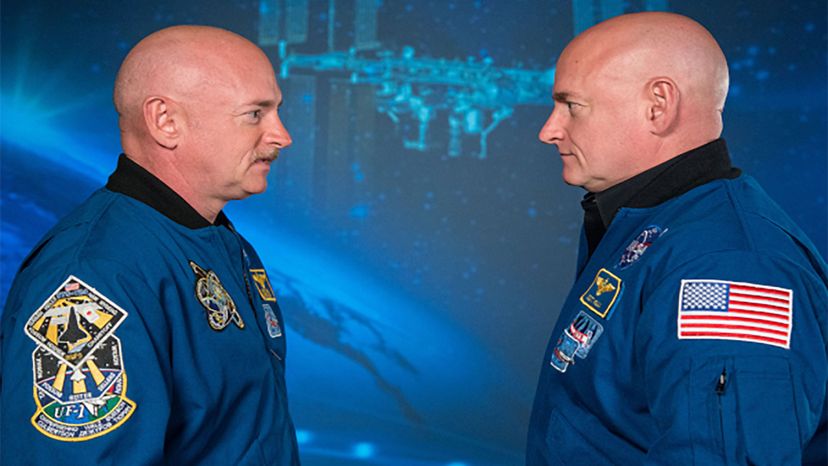
The International Space Station alone has generated scores of medical innovations with uses on Earth, such as a method for delivering cancer-fighting medication directly to tumors; gadgetry that a nurse can hold to perform ultrasounds and transmit the results to a doctor thousands of miles away; and a robotic arm that can perform delicate surgery inside an MRI machine.
NASA scientists, in an effort to protect astronauts from losing bone and muscle in the microgravity environment of space, also helped a pharmaceutical company to test Prolia, a drug that today helps protect elderly people from osteoporosis. Although mice and humans don't have identical physiology or biology, it made sense to test this drug on mice in space, since astronauts lose around 1.5 percent of their bone mineral density each month in microgravity, which correlates to the 1.5 percent yearly bone density loss of an elderly woman on Earth to osteoporosis [source: Kiger ].
7: Space Exploration Is Inspirational
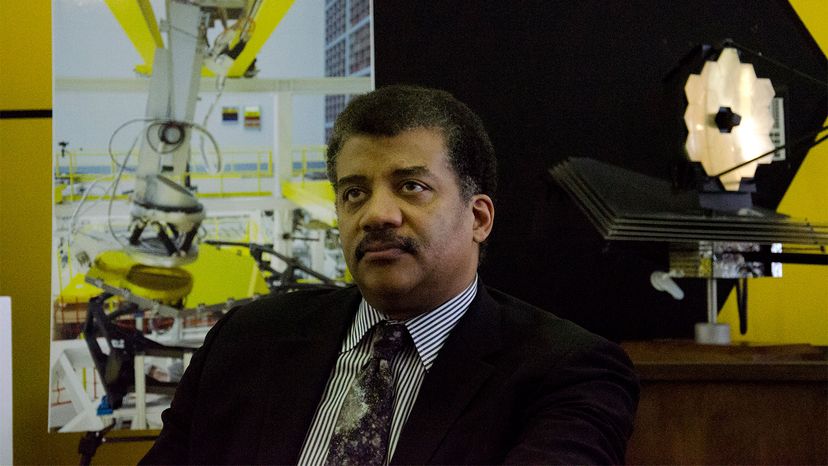
If we want a world in which our kids aspire to being great scientists and engineers instead of reality show hosts, rappers or Wall Street financial tycoons, having a great enterprise to attract and inspire them is crucial.
As astrophysicist, author and lecturer Neil deGrasse Tyson told National Public Radio in 2012, "I could stand in front of eighth graders and say, 'Who wants to be an aerospace engineer so you can design an airplane 20 percent more fuel-efficient than the one your parents flew?' That doesn't usually work. But if I say, 'Who wants to be an aerospace engineer to design the airplane that will navigate the rarefied atmosphere of Mars?' ... I'm getting the best students in the class." This still holds true today and inspiring kids will always be the key to future space exploration.
6: It's Important for National Security
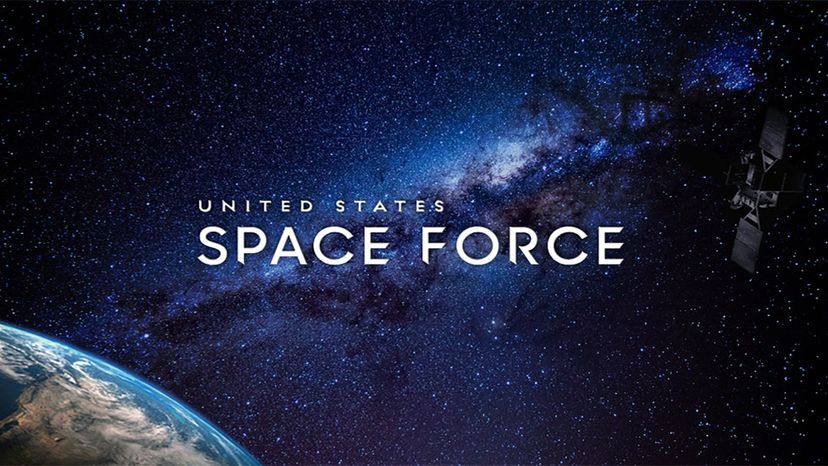
The U.S. needs to detect and prevent a hostile nation or terrorist group from deploying space-based weapons or attacking its navigational, communications and surveillance satellites. And while it and other major powers such as Russia and China are signatories of a 1967 treaty that forbids nations from claiming territory in space, it's not hard to think of examples of past treaties that were tossed aside when someone saw a benefit in doing so.
Even if the U.S. privatizes much of space exploration, it still wants to ensure that companies can mine the moon or asteroids without worrying that interlopers will usurp their claims or steal their production [source Minter ]. That's why it's crucial to back up diplomacy with a NASA spacefaring capacity that could be converted to military use, if needed. In 2019, a law passed by Congress with bipartisan support created the U.S. Space Force, a new branch of the U.S. armed forces devoted to protecting U.S. interests in space [source: Space Force ].
5: We Need Raw Materials From Space
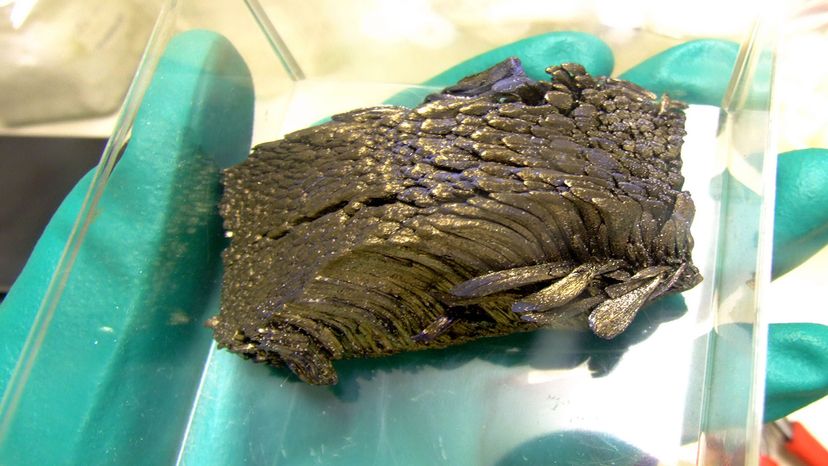
There's gold out there in the cosmos, and silver , platinum and other valuable substances, too [source: Letzter ]. A lot of attention has been given to a private-sector venture that envisions mining operations on asteroids, but space miners wouldn't have to go that far to find riches.
The moon, for example, is a potentially lucrative source of helium-3 , which is used for certain MRIs and a possible fuel for nuclear power plants. The moon also is believed to be a potential source of rare earth elements such as europium and tantalum, which are in high demand for use in electronics, solar panels and other advanced gadgetry [source: Ouellette ].
4: Nations Can Work Together Peacefully
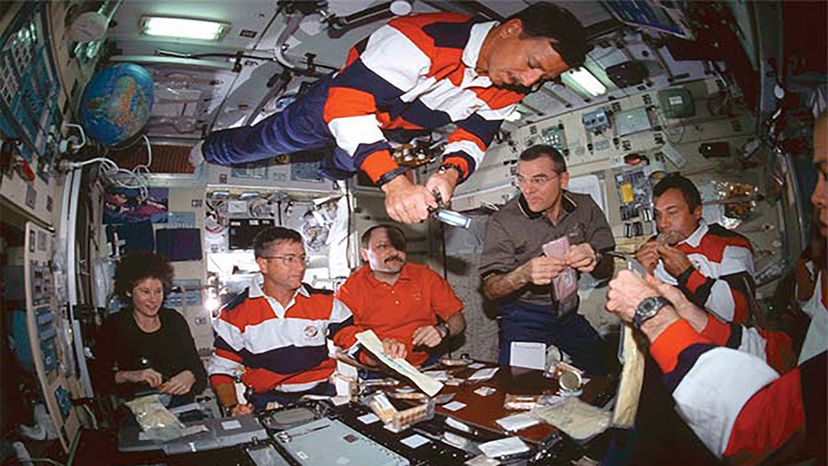
Earlier, we mentioned the ominous notion of international conflict in space. But it doesn't have to be that way, as evidenced by the cooperation of multiple nations on the International Space Station . And a U.S. space program could allow other countries, large and small, to join in their exploration efforts.
A 2018 paper from NASA points out the benefits of international cooperation . For one, the hefty costs could be spread around. For another, it could forge stronger diplomatic ties between nations such as the U.S. and India, and help create new jobs in both countries, for example.
In 2020, NASA awarded the first contracts to four companies to collect small amounts of lunar regolith, the loose rock and dust that sits atop the surface, when missions to the moon eventually resume in the 2020s. It could be the first step toward mining of raw materials from the moon. "Space resources are the fuel that will propel America and all of humanity to the stars," Mike Gold, NASA's then-acting administrator for international and interagency relations, explained at the time [source: NASA ].
3: It Could Help Answer a Really Big Question
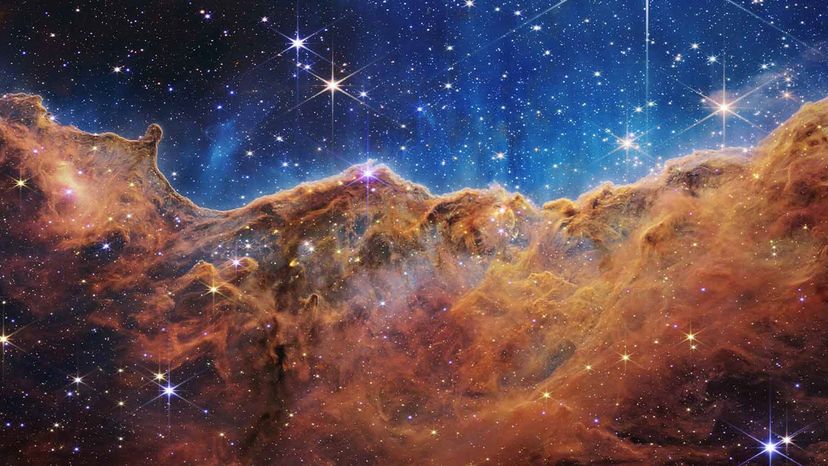
Nearly two-thirds of Americans (close to 65 percent) believe that intelligent life exists on other planets, according to a 2021 Pew Research Center survey. In general, the public does not view UFOs as a major threat to the country. When asked to think about U.S. national security, 51 percent of Americans say that UFOs are not a threat at all, and 36 percent believe they are a minor threat.
But so far, sweeps of the sky with Earth-based telescopes for signals that might be beacons from distant civilizations have proven fruitless, possibly because the Earth's atmosphere interferes with such messages reaching us. That's why searchers for extraterrestrial civilizations are eager for the deployment of more orbital observatories such as the James Webb Space Telescope. That satellite, which was launched on Christmas Day 2021, has the ability to search for the chemical signs of life in the atmospheres of distant planets outside our solar system [sources: Kramer , Howell ]. That's a start, but an even more aggressive space-based effort to look for clues of extraterrestrials might finally help us to answer the question of whether we have company out there.
2: Humans Need to Fulfill Their Urge to Explore

Our primitive ancestors spread from east Africa to all over the planet, and since then, we've never stopped moving. We're running out of fresh territory on Earth , so the only way to meet this ancient urge is to find somewhere new to go — whether it's making brief jaunts to the moon as a tourist, or signing up for an interstellar voyage that will take multiple generations.
In a speech , to the Bay Area Houston Economic Partnership, former NASA administrator Michael Griffin differentiated between "acceptable reasons" and "real reasons" for space exploration. Acceptable reasons would be issues like economic benefit and national security. But real reasons include concepts like curiosity, competitiveness and monument-building.
"Who among us does not know the wonder and mystery and awe and magic of seeing something, even on television, never seen before, an experience brought back to us by a robotic space mission?" Griffin added that "when we do things for real reasons as opposed to acceptable reasons, we produce our highest achievements."
1: We May Need to Colonize Space to Survive
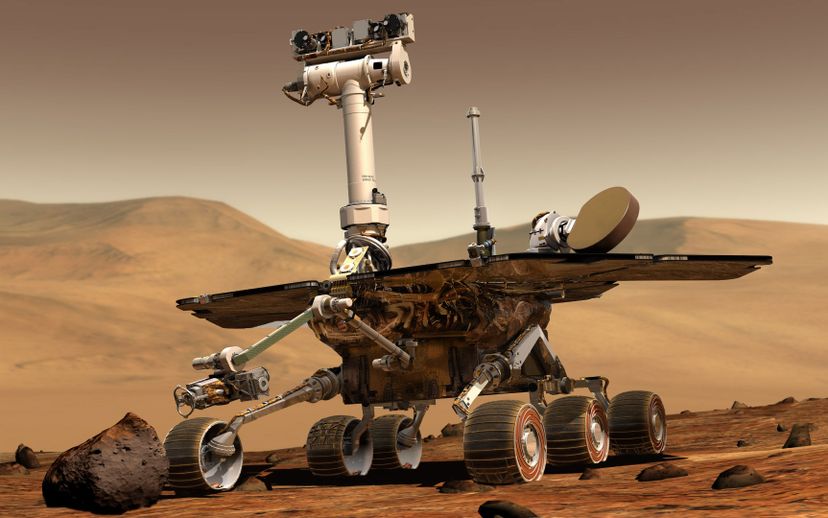
Already, our ability to put satellites in space is helping us to monitor and combat pressing problems on Earth, from forest fires and oil spills to the depletion of aquifers that people depend upon for drinking water [source: Fowler ].
But our burgeoning population, rampant greed and thoughtlessness about environmental consequences have already done pretty severe damage to our planet. According to a 2012 survey of research, most scientists estimate that Earth has a carrying capacity of between 8 and 16 billion — and we already have a population of nearly 8 billion [source: UNEP ]. That's led some futurists to argue that we should be preparing to colonize another planet, and soon. Your life — or those of your descendants — might depend upon it.
Why Space Exploration Matters FAQs
Why is space exploration important, what are the cons of space exploration, how has space exploration benefited health and medicine, how is space exploration important for national security, what resources can we get from space, lots more information, author's note: 10 reasons why space exploration matters to you.
I was a child in the 1960s, a time when many of us believed that someday we would be flying off into the cosmos in search of adventure. I can't say precisely when that dream ended for me, but I remember that back in the mid-1990s, the British folk singer Billy Bragg recorded a song that seemed to capture some of what I felt. In "The Space Race is Over," Bragg sang of staring at the moon as a child, and dreaming that night of walking on the Sea of Tranquility.
But decades later, he stood staring at the same sky with his young son, who asked him, "Why did they ever go?" As Bragg lamented, "The space race is over, and I can't help but feel that we're all just going nowhere." Despite the beauty of his lyrics, I must differ with him respectfully on that last point. I continue to believe that humanity still has a chance to become a truly spacefaring race, and that we must find a way to do so.
Related Articles
- Stunning Webb Images Show Clearest Look at Cosmos Ever
- NASA Inventions You Might Use Every Day
- 10 Space Landmarks We'd Like to Visit
- How to Build a Better Space Explorer
- Austen, Ben. "After Earth: Why, Where, How, and When We Might Leave Our Home Planet." Popsci.com. March 16, 2011. (July 4, 2022) http://www.popsci.com/science/article/2011-02/after-earth-why-where-how-and-when-we-might-leave-our-home-planet
- Bragg, Billy. "The Space Race is Over." Genius.com.. 1996. (Sept. 14, 2014) https://genius.com/Billy-bragg-the-space-race-is-over-lyrics
- Colucci, Lamont. "America Must Retake Lead in Space Exploration." Usnews.com. Dec. 11, 2012. (July 4, 2022) http://www.usnews.com/opinion/blogs/world-report/2012/12/11/america-must-retake-lead-in-space-exploration
- DART. "Double Asteroid Redirection Test. " Jhuapi.edu. (July 4, 2022) https://dart.jhuapl.edu/
- Dvorsky, George. "NASA's Artemis Moon Landing Program: Launches, Timeline, and More." Gizmodo. May 14, 2022. (July 4, 2022) https://gizmodo.com/nasa-artemis-program-moon-landing-launch-dates-1848906821
- Fowler, Wallace. "Anniversary Shows Us that NASA and Space Exploration are Worth Their Costs." Utexas.edu. July 21, 2014. (July 4, 2022) http://www.utexas.edu/know/2014/07/21/anniversary-shows-us-that-nasa-and-space-exploration-are-worth-their-costs/
- Government Accountability Office. "Actions Needed to Improve Transparency and Assess Long-Term Affordability of Human Exploration Programs." Gao.gov. May 2014. (July 4, 2022) http://www.gao.gov/assets/670/663071.pdf
- Independent. "50 years, 50 giant leaps: How Nasa rocked our world." Independent. July 29, 2008. (July 4, 2022) http://www.independent.co.uk/news/science/50-years-50-giant-leaps-how-nasa-rocked-our-world-879377.html
- Griffin, Michael. "The Real Reasons We Explore Space." Air & Space Magazine. July 2007. (July 4, 2022) https://www.smithsonianmag.com/air-space-magazine/the-real-reasons-we-explore-space-18816871/
- Howell, Elizabeth. "International Space Station: Facts, History & Tracking." Space.com. Oct. 12, 2021 (July 4, 2022) https://www.space.com/16748-international-space-station.html
- Howell, Elizabeth. "NASA's James Webb Space Telescope: The ultimate guide." Space.com. June 26, 2022. (July 4, 2022) https://www.space.com/21925-james-webb-space-telescope-jwst.html
- Jet Propulsion Laboratory. "20 Inventions We Wouldn't Have Without Space Travel." Jpl.nasa.gov. May 20, 2016. (July 4, 2022) https://www.jpl.nasa.gov/infographics/20-inventions-we-wouldnt-have-without-space-travel
- Kharpal, Arjun. "China plans to send its first crewed mission to Mars in 2033 and build a base there." June 24, 2021. (July 4, 2022) https://www.cnbc.com/2021/06/24/china-plans-to-send-its-first-crewed-mission-to-mars-in-2033.html
- Kiger, Patrick J. "Innovations Aboard the ISS." Nationalgeographic.com. March 2014. (July 4, 2022) https://web.archive.org/web/20140306205041/http://channel.nationalgeographic.com/channel/live-from-space/articles/innovation-and-the-iss/
- Kramer, Miriam. "Want to Find Alien Life? It Will Take A Lot of Luck." Space.com. May 26, 2014. (July 4, 2022) http://www.space.com/25999-alien-life-search-tools-luck.html
- Kueter, Jeff and Sheldon, John B. "An Investment Strategy for National Security Space." Heritage Foundation. Feb. 20, 2013. (July 4, 2022) https://www.heritage.org/space-policy/report/investment-strategy-national-security-space
- Kennedy, Courtney and Lau, Arnold. "Most Americans believe in intelligent life beyond Earth; few see UFOs as a major national security threat." June 30, 2021 (July 4, 2022) https://www.pewresearch.org/fact-tank/2021/06/30/most-americans-believe-in-intelligent-life-beyond-earth-few-see-ufos-as-a-major-national-security-threat/
- Letzter, Rafi. "There’s too much gold in the universe. No one knows where it came from." Live Science. Oct 1, 2020. (July 4, 2022) https://www.livescience.com/where-did-gold-come-from.html
- Mann, Adam. "NASA's first planetary defense mission will nudge an asteroid." Science. Nov. 18, 2021. (July 4, 2022) https://www.science.org/content/article/nasa-s-first-planetary-defense-mission-will-nudge-asteroid
- Minter, Adam. "The Asteroid-Mining Race Begins." Bloombergview.com. Sept. 8, 2014. (July 4, 2022) http://www.bloombergview.com/articles/2014-09-08/the-asteroid-mining-race-begins
- NASA. "International Space Station Benefits for Humanity" 2018. (July 4, 2022) https://www.nasa.gov/sites/default/files/atoms/files/iss_benefits_for_humanity_3rded-508.pdf
- NASA. "NASA Selects Companies to Collect Lunar Resources for Artemis Demonstrations. " Nasa.gov. Dec. 3, 2020. (July 4, 2022) https://www.nasa.gov/press-release/nasa-selects-companies-to-collect-lunar-resources-for-artemis-demonstrations
- NASA. "Near Earth Object Program." Nasa.gov. Sept. 15, 2014. (July 4, 2022) https://cneos.jpl.nasa.gov/
- NASA. "Space Shuttle Program: Spanning 30 Years of Discovery." Nasa.gov. (July 4, 2022) http://www.nasa.gov/mission_pages/shuttle/main/index.html
- National Space Society. "Position Paper: Protecting Earth from Cosmic Impacts." Nss.org. February 2014. (July 4, 2022) https://space.nss.org/wp-content/uploads/NSS-Position-Paper-Planetary-Defense-2014.pdf
- National Public Radio. "'Space Chronicles': Why Exploring Space Still Matters." Npr.org. Feb. 27, 2012. http://www.npr.org/2012/02/27/147351252/space-chronicles-why-exploring-space-still-matters
- Ouellette, Jennifer. "This Moon was Made for Mining (Helium-3)." Discovery News. Feb. 21, 2011. (July 4, 2022) https://www.seeker.com/this-moon-was-made-for-mining-helium-3-1765179658.html
- Shepherd, Christian. "China plans crewed missions to Mars by 2033. " Financial Times. June 24, 2021 (July 4, 2022) https://www.ft.com/content/565783e3-e616-436c-a626-70ca106da78c
- SpaceRef. "Space Exploration: Real Reasons and Acceptable Reasons." Spaceref.com. Jan. 27, 2007. (July 4, 2022) http://www.spaceref.com/news/viewsr.html?pid=23189
- Torchinsky, Rina. "Elon Musk hints at a crewed mission to Mars in 2029. " National Public Radio. March 17, 2022. (July 4, 2022) https://n.pr/3yFZr5X
- UNEP. "One Planet, How Many People? A Review of Earth's Carrying Capacity." Unep.net. June 2012. (July 4, 2022) http://na.unep.net/geas/archive/pdfs/GEAS_Jun_12_Carrying_Capacity.pdf
- United States Space Force. "United States Space Force History." Spaceforce.mil. (July 4, 2022) https://www.spaceforce.mil/About-Us/About-Space-Force/History/
- Wall, Mike. "December Test Flight Huge for NASA's Next Manned Spacecraft." Space.com. June 19, 2014. (July 4, 2022) http://www.space.com/26291-nasa-orion-capsule-test-flight.html
Please copy/paste the following text to properly cite this HowStuffWorks.com article:
Space Exploration Pays Off Here on Earth
- Space Exploration
- An Introduction to Astronomy
- Important Astronomers
- Solar System
- Stars, Planets, and Galaxies
- Weather & Climate
:max_bytes(150000):strip_icc():format(webp)/ccp_head2-58b8438e3df78c060e67b2ce.jpg)
- M.S., Journalism and Mass Communications, University of Colorado - Boulder
- B.S., Education, University of Colorado
Every so often someone asks the question, "What good does space exploration do for us here on Earth?" It's one that astronomers, astronauts, space engineers and teachers answer nearly every day.
It's simple: space exploration pays off in goods, technology, and paychecks. The work is done by people who are paid to do it here on Earth. The money they receive helps them buy food, get homes, cars, and clothing. They pay taxes in their communities, which helps keep schools going, roads paved, and other services that benefit a town or city. The money may be spent to send things "up there", but it gets spent "down here." It spreads out into the economy.
Another way to look at the "return on investment" for space exploration is that it helps pay the bills right here on the planet. Not only that but the products of space exploration range from the knowledge that gets taught to science research that benefits a wide variety of industries and technology (such as computers, medical devices, etc.) that are used here on Earth to make life better. It's really a win-win situation for everybody involved.
What are Space Exploration Spin-offs?
The products of space exploration touch lives in more ways than people think. For example, anyone who has ever had a digital x-ray, or a mammogram, or a CAT scan, or been hooked up to a heart monitor, or had specialized heart surgery to clear blockages in their veins, they've benefited from technology first built for use in space. Medicine and medical tests and procedures are HUGE beneficiaries of space exploration technology and techniques. Mammograms to detect breast cancer are another good example.
Farming techniques, food production and the creation of new medicines are also impacted by space exploration technologies. This directly benefits all of us, whether we are food producers or simply food and medicine consumers. Each year NASA (and other space agencies) share their "spinoffs", reinforcing the very real role that they play in everyday lives.
Talk to the World, Thanks to Space Exploration
Cell phones are used all over Earth. They use\ processes and materials developed for space-age communication. They "talk" to GPS satellites circling our planet, giving location data. There are other satellites monitoring the Sun that warn scientists, astronauts, and satellite owners of upcoming space weather "storms" that could affect communications infrastructure.
Users are reading this story on a computer, hooked up to a worldwide network, all made from materials and processes developed for sending science results around the world. Many people watch television using data transferred via satellites stationed in space around the world.
Entertain Yourself
Personal entertainment electronics are also a spinoff from the space age. The music people listen to on personal players is delivered as digital data: ones and zeroes, the same as any other data delivered via computers. It's also the same method that helps deliver information from weather satellites, orbiting telescopes, and spacecraft at other planets. Space exploration required the ability to transform information into data that our machines can read. Those same machines power industries, homes, education, medicine, and many other things.
Explore Distant Horizons
Travel much? The airplanes we fly in, the cars we drive, the trains we ride in and the boats we sail on all use space-age technology to navigate. Their construction is influenced by lighter materials used to build spacecraft and rockets. Although few of us are able to travel to space, our understanding of it is enlarged by the use of orbiting space telescopes and probes that explore other worlds. For example, every day or so, new images come to Earth from Mars , sent by robotic probes that deliver new views and studies for scientists to analyze. People also explore the sea bottoms of our own planet using craft influenced by the life support systems needed to survive in space.
What Does All This Cost?
There are countless examples of space exploration benefits that we could discuss. But, the next big question people ask is "How much does this cost us?"
The answer is that space exploration may cost some money up front, just as any investment does. However, it pays for itself many times over as its technologies are adopted and used here on Earth. Space exploration is a growth industry and gives good (if long-term) returns. NASA's budget for the year 2016, for example, was $19.3 billion, which will be spent here on Earth at NASA centers, on contracts to space contractors, and other companies that supply whatever it is that NASA needs. None of it is spent in space. The cost works out to a penny or two for each taxpayer. The return to each of us is much higher.
As a part of the general budget, NASA's portion is less than one percent of the total federal spending in the U.S. That's far, far less than military spending, infrastructure costs, and other expenses the government takes on. It gets us many things in our daily lives that we never connected to space, from cellphone cameras to artificial limbs, cordless tools, memory foam, smoke detectors, and much more.
For that sliver of money, NASA's "return on investment" is very good. For each dollar spent on NASA's budget, somewhere between $7.00 and $14.00 is returned back into the economy. That's based on the income from spinoff technologies, licensing, and other ways that NASA money is spent and invested. That's just in the U.S. Other countries engaged in space exploration very likely see good returns on their investments, as well as good jobs for trained workers.
Future Exploration
In the future, as humans spread out to space , the investment in space exploration technologies such as new rockets and light sails will continue to spur jobs and growth on Earth. As always, the money spent to get "out there" will be spent right here on the planet.
- Should We Build a Moon Base?
- The Future of Human Space Exploration
- Reasons for Humanity to Go Back to the Moon
- The Pioneer Missions: Explorations of the Solar System
- Neil Armstrong Quotes
- All About the Moon
- Biography of Elon Musk
- The Space Race of the 1960s
- The History of the European Space Agency
- The History of Space Shuttle Challenger
- What's it Like to Live in Space?
- Model Rockets: A Great Way to Learn about Spaceflight
- Alpha Centauri: Gateway to the Stars
- Apollo 8 Brought 1968 to a Hopeful End
Pros and Cons of Space Tourism
People put space tourism in the same bracket as flying cars as little as twenty years ago. The starting point of space tourism can be traced back to 2001 and the first space tourist, Dennis Tito. However, this term didn’t become a buzzword until 2021, when two billionaires, Sir Richard Branson and Jeff Bezos, set off to space in separate spacecraft in the same week. These two events marked the beginning of the new-generation space race.
Space tourism became available in February 2022, when Virgin Galactic started selling tickets for the next trip to space. While many people jumped on the space tourism bandwagon, others are beginning to wonder whether traveling to space as a tourist is a good idea.
This article will discuss the basics of commercial space travel, outlining its most essential advantages and disadvantages.
What Is Space Tourism?
A completely new level of sightseeing, it will become more widely available, you don’t need to be an astronaut to travel to space, new opportunities for space exploration, it will inspire more people to become astronauts, passengers will be able to experience weightlessness, it can boost scientific research, a new perspective of our planet, the possibility of finding additional resources, the possible discovery of extraterrestrial life, we may find other planets to colonize, more opportunities for employment, it could identify potential dangers to our planet, major technological advancements, endless opportunities, it contributes to global warming, few people can afford it right now, limited space, it’s not available for everyone, space tourism costs a lot of money, it’s not 100% safe, you pay a lot of money for a short trip, the issue with space junk, wasting natural resources, exposure to radiation, not going above the kármán line, out-of-date information, space sickness, all those resources could be invested elsewhere, it could put our planet at risk, space tourism – should we do it.
Before we go into the details regarding the pros and cons of space tourism, let’s talk about what this newest form of travel means.
Space tourism and space travel are not the same. What sets them apart is their purpose. Astronauts are sent to space to conduct various types of scientific research and experiments, and they go through rigorous training and preparation before they’re allowed to leave Earth. As a result, becoming an astronaut is incredibly challenging. Every year, NASA chooses a handful of people among tens of thousands of applicants.
Space tourism, or commercial space travel, refers to traveling to space for recreational reasons. People who want to become space tourists must satisfy three requirements: They must be 18 or older, physically fit, and rich. For example, one ticket for a 90-minute trip with Virgin Galactic costs $450,000, but we’ll get to that later.
There are three types of space tourism: orbital, suborbital, and lunar space tourism. The main difference between orbital and suborbital spacecraft is speed. Orbital space travel reaches an altitude of 1.3 million feet (400 kilometers), for which a spacecraft would need to travel at 17,400 miles per hour (28,000 kilometers per hour).
Suborbital rocket ships can only fly to a certain altitude (330,000 feet or 100 kilometers) because they don’t have enough power to orbit around the planet. As a result, these spacecraft must fly at a minimal speed of 3,700 miles per hour (6,000 kilometers per hour).
Most people assume that space tourism is pioneered by NASA and other government agencies. However, privately owned aerospace companies are now leading the global space tourism market. The three most important are Sir Richard Branson’s Virgin Galactic, Jeff Bezos’ Blue Origin, and Elon Musk’s SpaceX. The first two companies offer suborbital space travel, both licensed by the Federal Aviation Administration (FAA) for passenger space travel.
On the other hand, SpaceX plans to introduce orbital space tourism to the public. SpaceX rockets can reach 120 miles above the Earth, while Blue Origin and Virgin Galactic can’t achieve half that distance. Aside from SpaceX, Space Adventures, an American space tourism company is another enterprise that plans to introduce tourism flights to Earth’s orbit.
The final form of space tourism is lunar space travel, which includes orbiting around the moon or even landing on it. Space Adventures wants to introduce circumlunar flyby tours, but one ticket will be estimated at $150 million. SpaceX will also organize a space trip around the moon, which will be reached via the Starship.
Space tourism isn’t only in the hands of privately owned aerospace companies. NASA announced that space tourists, formally called private astronauts, will be allowed on board the International Space Station. They’ll be able to get there with the SpaceX Crew Dragon and the Boeing Starliner, which is currently being developed. Space tourists will be required to pay $35,000 for this trip to space.
Pros of Space Tourism
Many people are looking forward to the development of space tourism. In fact, the PEW Research Center surveyed the public’s opinion on space tourism in 2018. The survey revealed that 42% of participants stated they were definitely or probably interested.
It won’t only benefit people who want to be a part of this new era of space exploration but also space scientists. The advantages aren’t just limited to scientific and technological advancements. The dream will come true for many people who have always wanted to go to space.
Here are some of the most essential advantages of space tourism.
People have always been drawn to brand-new, unique experiences, and what could be better than viewing the Earth from a spaceship? Whether you’re a fan of science fiction or deeply fascinated by the endless wonders of our galaxy, traveling to outer space sounds like an unattainable fantasy. However, it’s closer than you might think.
People who said they were interested in space tourism in the 2018 PEW survey named three main reasons. Most participants (45%) said they wanted to experience something unique, while 29% of those surveyed wished to view the Earth from space. The others said they wanted to travel to space to learn more about our world.
Space tourists will be able to see the Earth, the Moon, the International Space Station, the Kármán Line, and many other parts of our solar system. Traveling to space will undoubtedly be a once-in-a-lifetime experience for many.
Since the beginning of space travel, only about 600 people have been to space. However, the development of space tourism will make traveling to space available for many people. According to a study by Northern Sky Research, there will be almost 60,000 space tourists by 2031.
There are currently long waiting lists for Virgin Galactic flights due to take place by the end of 2022. Although it’s nearly impossible to get a seat on this cutting-edge space vehicle right now, Virgin Galactic hopes to conduct 400 flights a year.
Even though prices for space tourism are currently going through the roof, it’s believed they will be significantly reduced when commercial space exploration becomes mainstream. One day, it may even become affordable for ordinary people.
You don’t need to be a trained astronaut to become a space tourist. Previously, the opportunity to fly to outer space was only available to astronauts. However, it will be possible for everyone who can afford it in the future.
Astronauts undergo years of preparation for a single flight, whereas space tourists receive the proper training a few days or even hours before the trip. If you want to fly with Blue Origin, you’ll only need one training day. On the other hand, Virgin Galactic’s training takes five days to complete.
The requirements for becoming a space tourist vary depending on the company. For example, if you want to fly with Virgin Galactic, you must be 18. Another important factor in traveling to space is physical fitness. You need to be relatively healthy for this adventure. People with heart problems or those who are overweight or underweight won’t be able to go.
Exploring outer space has been the goal of many government agencies and privately owned space companies ever since the 1950s. One of the most notable events of space exploration was the space race between the U.S. and the Soviet Union. This 20-year battle gave rise to many technological advancements and scientific achievements. It was also when the two nations sent the world’s first-ever satellites, rockets, and astronauts into space.
Space tourism and space exploration are inherently connected, where one directly influences the other. Therefore, increasing interest in space tourism will renew the global interest in space exploration, leading to more opportunities.
Many children want to be astronauts when they grow up. Kids usually start with sci-fi movies and space camps before pursuing educational opportunities in engineering, science, or technology. The chance to go to space when they grow up can inspire many young minds. Many people who have visited space as tourists have stated that the experience was life-changing.
Going to space will inspire many more people to become astronauts or contribute to the space industry in another way.
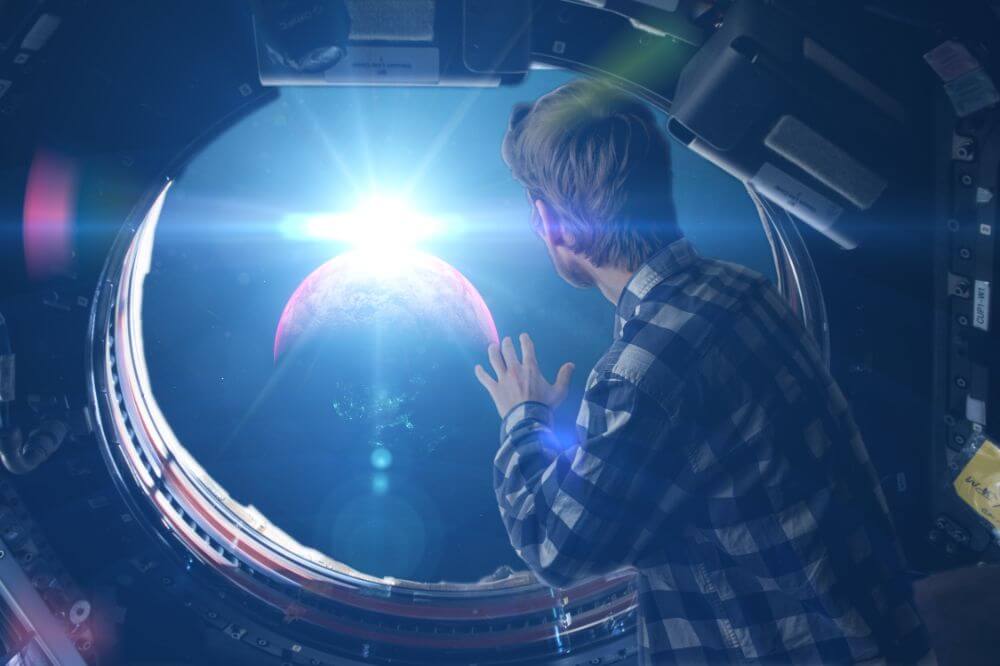
Other than being able to view our planet from outer space, passengers will also get a chance to experience weightlessness. Of course, zero-gravity simulators have already been developed on Earth, like the Zero G Experience , where people can experience weightlessness without going to space.
Space tourism allows people to sample the real thing. Once the spacecraft is launched, passengers will go through a similar experience to roller coaster rides. Space tourists who booked a flight with Blue Origin will be in zero-gravity for three minutes before the space vehicle descends to Earth.
Space tourism can help collect valuable research data. Such information will be essential in the development of space travel and space exploration. This kind of data wouldn’t be provided by space tourists but by people who organize the trip to space. Scientific research could encourage various innovations and solutions to problems.
Seeing our planet from space is a unique experience that will make us realize how small we are. We tend to think that we are the center of the universe and that the problems we face in life are insurmountable. However, going into space, even for a few minutes, puts things like conflicts and other issues that can be easily solved into perspective.
Another advantage of space tourism is the possibility of finding resources that are being depleted from our planet. If spacecraft take frequent trips to the moon or other locations in outer space, there is a greater chance of finding valuable resources that can be used for various applications.
For example, resources such as water, metals, minerals, atmospheric gases, and volatile elements can be found on various celestial bodies surrounding the Earth. For example, water was already found on the moon, Mars, and in some asteroids. Oxygen is another valuable resource that’s necessary for rocket propellants.
Not only can we use the raw materials to make life easier on Earth, but those resources can be put into improving aerospace technology. In other words, space tourism might pay off in the long run.
Space tourism brings us closer to finding extraterrestrial life. The subject of aliens has always been controversial, sparking many arguments about their existence. However, even though there is no solid proof of extraterrestrial life, many scientists agree that the odds of life on other planets are high.
The more money and resources that are invested into the commercial space travel industry, the further we will be able to explore. One of the goals of space exploration is discovering life outside of Earth, and space tourism can make this happen.
Space tourism may even bring us closer to finding new planets to colonize. But unfortunately, there haven’t been any discoveries of planets that are habitable and safe for human life yet. The planet closest to Earth in terms of habitability is Kepler-452b, which seems to be the most promising candidate.
The Mars colonization project is already on the way. Elon Musk plans to take SpaceX to Mars in five to ten years. So even though moving to a new planet seems like a plot from a movie right now, who knows what the future might bring? One thing is sure – space tourism will open new doors for us and allow us to explore more of the universe.
Hundreds of thousands of people are employed in the space industry, government agencies, and private companies. The growth of space tourism will open new doors for many individuals. As a result, the sector will likely see an increase in employment in the next couple of years.
Traveling to space lets us view the Earth from a different perspective. This will help us identify dangers to our planet and prepare for potential hazards. For example, if an asteroid or a comet is heading toward Earth, we would have more time to prepare. By exploring space, we could locate some of those hazards before they even come close and prevent a potential disaster.
As interest keeps growing in space tourism, more and more private companies will want to be a part of the new-generation space race. This will lead to significant technological advancements in the aerospace sector, facilitating space tourism even more. As a result, we can expect to see bigger, faster, and better rockets in the future, which will be made for suborbital space tourism and orbital space travel.
The future of space exploration through space tourism presents countless opportunities. The Northern Sky Research space tourism study suggests that the global space tourism market will be worth $20 billion in revenue.
Space tourism may replace long-air flights. Instead of traveling 16 to 17 hours from one continent to another, space travel will enable passengers to reach their destinations in under an hour.
One day, there might even be hotels in space, allowing space tourists to enjoy the wonders of space for a longer time. This is the goal of the Orbital Assembly Corporation. Their space hotels, the Voyager Station and the Pioneer Station, will orbit the Earth. Blue Origin and Orion Span are also working on building hotels in space called the Aurora Station and the Orbital Reef.
Cons of Space Tourism
Now that we’ve gone through all the advantages of space tourism let’s look at some downsides. Space tourism is extremely expensive and inaccessible, but it can also be dangerous in several ways.
Launching a rocket creates a significant carbon footprint. Spacecraft generate soot, a harmful substance of large amounts of carbon. Once it’s released into the atmosphere, the soot from a spacecraft is absorbed by sunlight, which increases the warmth in the atmosphere.
A spacecraft must burn excessive fuel to reach space and overcome Earth’s gravity. We’re talking hundreds of tons, which can leak through the rocket and spill into the atmosphere. The harmful chemicals, along with rocket fumes, harm the ozone layer.
It’s already possible to purchase tickets for space. However, it’s costly. One ticket for a ride with Virgin Galactic costs $450,000, and that’s only for a 90-minute trip. Now, becoming a space tourist is only possible if you’re a multi-millionaire. The only people who have become space tourists are billionaires like Elon Musk, Jeff Bezos, and Sir Richard Branson. That’s why space tourism has been dubbed “the billionaire space race.”
Right now, both Virgin Galactic and Blue Origin have enough room for a maximum of six passengers. However, if we were to include the two pilots, they could only accommodate four more people. For that reason, those who wish to participate in the space exploration experience must book tickets several years in advance. More than 600 reservations have already been made for Virgin Galactic space tours.
In other words, if you were thinking about buying a ticket for a space trip that will take place this year, you can forget about it. That being said, SpaceX announced they were working on a spacecraft with enough room for up to 100 passengers.
As mentioned before, not everyone will be able to become a space tourist. Even if you have the money and you’re old enough, your health and physical condition could prevent you from participating in space tourism.
Those allowed to travel to space need to be in pretty good shape. Aerospace companies have different rules and requirements. For example, Blue Origin only lets you buy tickets if you can climb seven flights of stairs in under 90 seconds. People who fail to meet their requirements are automatically eliminated.
There are also different height and weight requirements. For example, you can’t weigh less than 110 pounds or more than 223 pounds to become a space tourist.
Space tourism isn’t only expensive for the passengers but for the private space company as well. For example, a return trip to the International Space Station with the Boeing Starliner or the SpaceX Crew Dragon will cost around $50 million.
The trips to the International Space Station carried out by Space Adventures from 2001 to 2009 cost $20 to $30 million for eight- to 14-day trips. The more recent trip to the International Space Station cost $55 million when Axiom Space sent the Crew Dragon Endeavor spacecraft in June 2022. The space tourists were there for 17 days.
Space tourism is still a generally new concept. In fact, Blue Origin has only carried out three space tourism launches so far, while Virgin Galactic went just once. Space travel continues to be dangerous due to many factors, such as inadequate safety protocols and lack of proper regulation. Traveling to space isn’t safe, so we must consider the worst-case scenario. If the spacecraft crashes, there won’t be a way to save any passengers.
Space tourists will be required to pay a ridiculous amount of money for a short time in space. For example, if you choose to travel with Blue Origin, you will only spend a few minutes in zero gravity, for which you would have to pay $200,000.
Other aerospace companies offer longer trips. For example, Virgin Galactic will send their spacecraft into space for three hours. Similarly, the New Shepard will be in space for approximately 11 minutes, while the Virgin VSS Unity flight takes two and a half hours.
Space junk refers to man-made debris and satellites that are no longer active and always orbit around our planet. While testing new rockets, launching them into space, and even on space missions, these rockets create a large amount of waste. In the 60 years of human space travel, we have generated over half a million items of space junk.
Space junk is another form of pollution that directly affects the Earth. Not to mention that space junk can also damage active satellites and spacecraft that might be close by. Space junk is dangerous because all those micro shards accumulate into larger piles of debris.
If the space mission is successful, all the investments and resources put into the project will pay off one way or another. However, if the experimentation fails, the resources will have been spent for nothing. The same applies to space tourism. If we were to look at a trip to space from that perspective, we would have to ask ourselves, is it worth spending so much money and resources just to send six people to space for three minutes?
One of the dangers of being an astronaut is constant exposure to harmful radiation from the sun, which leads to a greater risk of cancer and other health problems. Of course, space tourists who only spend a few minutes or hours in space shouldn’t have anything to worry about. But those who spend days or weeks in space might want to consider this factor.
The Kármán Line is a widely accepted border between the Earth’s atmosphere and outer space. It’s roughly 100 kilometers (62 miles) above sea level, located in the Earth’s thermosphere. Although no globally accepted law defines where space begins or ends, most regulatory agencies agree that the Kármán line is the closest we have to a border.
Suborbital spacecraft belonging to Blue Origin and Virgin Galactic won’t be able to cross the Kármán Line, which is considered “real” space. However, this may change in the future.
No matter how fast space technology might be developing, space scientists still use outdated information for some matters. Unfortunately, outdated information is useless and can also be dangerous and cause serious issues.
The problem with space research is that most of the celestial bodies that aren’t in our solar system are light-years away. Unfortunately, measuring time and distance in space is difficult, so we often receive inaccurate information.
Even for three minutes, exposure to zero gravity can affect the human body. To be more specific, passengers won’t have any side effects while they’re in space. The issues start when they return to Earth when space tourists experience space adaptation syndrome (SAS).
This is more commonly known as space sickness, like the space version of motion sickness. Space sickness manifests itself through loss of muscle power, bone resorption, loss of consciousness, and other short- and long-term effects. However, such symptoms are more likely to affect astronauts who spend months in space.
Space tourists may experience mild symptoms, like headaches, nausea, puffiness, temporary anemia, loss of appetite, and similar. They can even feel sick a few days after their journey to space. That’s why space tourism will only be available for passengers who are in good health.
Space tourism is a multibillion-dollar industry, and its revenue is only expected to grow. Since so much money is being invested, it raises many controversies. The Earth is in a lot of trouble, financially, politically, and environmentally. As a result, many politicians, humanitarians, and public figures have tried to highlight other matters that require our immediate attention. This includes poverty, global warming, world hunger, and many more issues that could benefit from these resources.
Last but not least, space tourism can be dangerous because it puts our planet at risk. This is another scenario that could be taken from a sci-fi movie. But in the future, traveling to space might have grave consequences.
Space tourism is a controversial topic. On the one hand, it can be a wonderful experience that allows us to view our planet and other celestial bodies from space. In addition, it opens up new doors for space exploration, inspires technological advancements, and boosts scientific research. But on the other hand, space tourism is extremely expensive; it accelerates global warming, is only available for a limited number of people, and can be very dangerous.
Whatever your opinion on space tourism, there’s no stopping its advancement. People will always be drawn to new things no one has experienced before, which is just one of the reasons the commercial space travel industry will grow. One day, we might even have hotels on the moon or other planets. There’s no telling what the future might bring.
Leave a Comment Cancel Reply
Your email address will not be published. Required fields are marked *
Save my name, email, and website in this browser for the next time I comment.
Get your Space Exploration And Astronomy Free Guide
We will never send you spam. By signing up for this you agree with our privacy policy and to receive regular updates via email in regards to industry news and promotions
How will the space economy change the world?
The passengers who boarded commercial flights just after World War II didn’t know that air travel would begin to soar over the next decade, nor did the masses who first logged onto the internet in the 1990s realize that computers would one day provide much of their news, entertainment, and social life. And today, few people understand that the space economy—broadly defined as activities in orbit or on other planets that benefit human beings—could soon transform how they live and work.
Some hints of the coming changes are apparent, including the frequent headlines about SpaceX, Blue Origin, and other private companies launching their own rockets and deploying satellite constellations. These activities, once primarily the domain of government agencies, are now possible in the private sector because recent technological advances in manufacturing, propulsion, and launch have made it much easier and less expensive to venture into space and conduct missions. Lower costs have opened the door to new start-ups and encouraged established aerospace companies to explore novel opportunities that once seemed too expensive or difficult. The technological improvements have also intrigued investors, resulting in a surge of space funding over the past five years.
The potential for innovative space applications is immense, especially if established aerospace companies form partnerships with businesses that traditionally haven’t ventured into orbit. Pharmaceutical companies might establish a lab on a space station to study cell growth, for instance, or semiconductor companies might manufacture chips in extraterrestrial factories to determine whether any aspects of the space environment, such as the lack of gravity, improve the process. Such possibilities, which might have seemed like the stuff of science fiction a few years ago, could become an essential part of a business across multiple industries in the near future.
But how and when should companies take advantage of their greater access to space and pursue emerging use cases? And how can they decide what opportunities are most promising when the technology is so nascent? Although much remains uncertain, companies that begin exploring these questions now could gain a long-term advantage.
The benefits of the space economy—with more to come
Space has long been a potent incubator for innovation—first from governments and large telcos and now from multiple private companies as well. From the launch of Sputnik 1 in 1957 through today, the space economy has delivered most of its value through satellite services, including communications and data and image collection and analysis. Satellites help large companies with multiple tasks, including inventory monitoring at distant locations, instant authorization of credit-card transactions, and international videoconferencing. Consumers use satellite technology whenever an online navigation system pinpoints their location, or when they make calls during plane flights or from rural locations that lack cell phone towers. And television viewers can thank satellites for beaming the signals that allow them to watch their favorite programs. The role of satellites in these activities is often overlooked—many people may think terrestrial computer networks provide the necessary connectivity—unless a glitch occurs and draws attention to the unobtrusive technology operating in the background.
In addition, satellites help world leaders address intractable social, environmental, and economic challenges. Consider a few ways that satellite data can provide insights—often more effectively and comprehensively than other sources:
- Climate change. More than 160 satellites monitor Earth to assess the effects of global warming and detect activities, such as illegal logging, that might contribute to the problem. 1 Six ways space technologies benefit life on Earth , World Economic Forum, Global Future Council on Space Technologies, October 16, 2020. NASA has used an instrument mounted on its Aqua satellite to monitor environmental changes, including those related to ocean water, water vapor, clouds, sea and land ice, and precipitation, for more than 20 years. Other satellites provide information that can help government agencies take urgent action on wildfires, coastal erosion, and other climate-related natural disasters.
- Food security. Satellite data is increasingly used to monitor crop development and potential threats to harvests, such as drought or insect invasions. The SERVIR project, a partnership between NASA and the US Agency for International Development, uses data from Earth-imaging satellites and geospatial technologies to help governments address multiple issues, including food shortages.
- National security. Governments, often working with companies in the private sector, can use satellite images and data to gain valuable intelligence, such as information on the movement of troops or the installation of weapons systems.
According to the not-for-profit Space Foundation, the space economy was valued at $469 billion in 2021, up 9 percent from 2020, the highest recorded growth since 2014. 2 See “Space Foundation releases The Space Report 2022 Q2 showing growth of global space economy,” Space Foundation, July 27, 2022; and Michael Sheetz, “The space economy grew at fastest rate in years to $469 billion in 2021, report says,” CNBC, July 27, 2022. Although the space economy now generates most value by enabling or enhancing activities on Earth, significant future value could arise from functions that occur entirely in orbit, such as in-orbit servicing, research and development, and manufacturing. That said, the satellite services available today will remain important and could be critical to some emerging use cases.
Finally, a tipping point
Researchers and other space enthusiasts have long discussed the potential for business activity in orbit, or even the development of space cities. But now, with lower costs and greater technological capabilities, the space economy may finally be at a tipping point, where businesses can conduct large-scale activities in space. As costs continue to drop, even more companies may contemplate space ventures; and for the first time, they might even be able to profit from forays into space.
More launches, lower costs
The costs for heavy launches in low-Earth orbit (LEO) have fallen from $65,000 per kilogram to $1,500 per kilogram (in 2021 dollars)—a greater than 95 percent decrease. 3 Thomas G. Roberts, “Space launch to low Earth orbit: How much does it cost?,” Aerospace Security, September 1, 2022. Computer-aided design, 3-D printing, and other innovations have contributed to the cost reductions by streamlining the manufacturing process and improving supply chains. The emergence of new commercial launch providers that prioritize efficiency is also helping. For instance, engineers at these companies have developed reusable components for launch vehicles, which lowers costs while promoting sustainability. The recent increase in launch frequency, particularly at SpaceX, is accelerating the drop in costs.
Current R&D efforts could reduce launch costs even further. Relativity Space, for instance, plans to use 3-D printing, artificial intelligence, and autonomous robotics to build a fleet of fully reusable, low-cost rockets. The first launch for these vehicles is planned for 2024 at Cape Canaveral, Florida. Similarly, SpaceX plans to conduct a full-scale, orbital test flight for its reusable Starship launch vehicle—the tallest and most powerful ever built—in late 2022.
Smaller satellites, bigger gains
The size and weight of satellites have fallen significantly in recent years because of various advances, primarily driven by private companies, such as the use of lighter solar panels and more efficient batteries. These changes, combined with greater use of commercial, off-the-shelf components, have decreased satellite costs and made their launch and operation feasible for many more organizations. Greater satellite demand is also improving costs because manufacturers obtain economies of scale by increasing production volume. These lower costs have helped alter the space landscape. Large government satellites, some of which cost upward of $1 billion and tend to be deployed in orbits far from Earth, are now outnumbered by smaller commercial satellites in LEO, often deployed in constellations, that can cost $100,000 or less.
In tandem with the cost decrease for satellites, researchers have created new technologies, such as higher-resolution sensors, that are boosting image capture, data processing, and other functions. Satellites can now collect, analyze, and transfer much larger stores of data than they could just five years ago.
Greater investment, more innovation
Public agencies, especially NASA and the US Department of Defense and Intelligence Community, have traditionally provided most space investment. While these agencies will continue to be a major source of funding, the combination of lower costs and more sophisticated technology is attracting more investment from both special-purpose acquisition companies (SPACs) and private investors—a trend that is driving innovation.
In 2021, private-sector funding in space-related companies topped $10 billion —an all-time high and about a tenfold increase over the past decade. The percentage of global space R&D funding coming from the US government decreased from about 70 percent to around 50 percent over the same period. 4 “The space report online,” Space Foundation, 2021; The space economy at a glance , OECD, July 22, 2011. Meanwhile, the number of space-related start-ups funded annually increased more than twofold from 2010 to 2018. 5 Start-up space: Update on investment in commercial space ventures , Bryce Tech, 2021. Commercial funding could surpass government funding within 20 years, a trend that government is largely embracing and that could lead to mutually beneficial public–private partnerships.
New use cases and more momentum
Although much uncertainty persists, analysts are so optimistic about space that some believe it will become a $1 trillion industry, thanks to enhancements to existing use cases and the development of entirely new applications. Much progress, including further reductions in launch and operational costs, must be made before many ambitious space projects can become a reality, but continued technology improvements are encouraging companies to increase their investments in the space economy now. The new use cases can be divided into two broad categories: space-for-Earth applications, which facilitate terrestrial activities, and space-for-space applications, which only involve activities that occur in orbit.
Space-for-Earth applications
Satellites are becoming more sophisticated each year, allowing researchers to enhance existing use cases and develop new offerings. Many companies have recently deployed smaller, less expensive satellites in LEO —an orbit that is ideal for high-bandwidth, low-latency communications—to provide better satellite connectivity. While most past efforts to launch LEO constellations failed because of high costs, limited demand, and inadequate funding, the situation is much different today. SpaceX’s Starlink has already launched an LEO constellation and has paying customers for its satellite broadband network. OneWeb and Amazon’s Project Kuiper, among others, also plan to deploy LEO constellations soon. Satellite imaging, another technology frequently used in current applications, has also improved and could enable multiple new use cases by providing more detailed and accurate information.
Some of the most important space-for-Earth applications include the following:
- Internet services in remote locations. Terrestrial networks are often difficult or uneconomical to install in underserved or rural areas. Beyond basic inconveniences, a lack of connectivity can interfere with vital services, including provision of remote learning or online medical consultations. By providing internet services to these areas, satellite connectivity could increase educational equity and social interactions and improve public health, especially in cases where the COVID-19 pandemic still limits some in-person interactions.
- Agriculture. Space-based remote sensors collect a multitude of data, including images, information on weather patterns, and measures for electromagnetic waves, all of which have applications for agriculture. McKinsey’s annual digital farmer adoption survey shows that 29 percent of row-crop farmers and 45 percent of specialty-crop farmers already rely on such data or plan to do so. The greatest value from satellite sensors for agriculture relates to yield-improvement opportunities. For instance, farmers can use satellite images to identify areas that require replanting early in the season, rather than conducting a manual inspection that might be time consuming and miss some areas of the field.
- Energy. Utilities can use satellite data to monitor vegetation that might be interfering with critical infrastructure, including power lines. By addressing the problems before they escalate, companies might avoid power outages.
- Mining. Satellites can support some of the most important functions at mining companies. Better connectivity might improve productivity at remote sites by helping headquarters-based experts communicate with local staff to solve problems. Satellite data can also help mining companies map emissions, monitor shipments along the supply chain, and improve exploration efforts by identifying mineral-rich areas.
- Insurance. Better imaging might allow more insurers to cost-effectively assess risks and damages at remote locations, with improved resolution and greater image-sequencing frequency pinpointing problems more clearly and eliminating the need for in-person visits. Pilot tests of radio-frequency-based mapping, which can detect “hidden” shipping activity, could help maritime and commodities-based hedge fund customers track the movement of goods overseas.
Space-for-space applications
Many of the emerging “space for space” applications are now possible for the first time because lower costs make frequent launches and long-term missions more financially viable. Consider a few use cases that could gain traction:
- Research and development. Space R&D is not a new application, but businesses outside the aerospace sector have not traditionally undertaken large-scale projects in this area. With lower costs and better technologies, however, this could change as companies build upon the research done to date on the International Space Station . Among other applications, pharmaceutical companies could develop cell cultures for predicting disease models. While these cultures develop in well-known patterns on Earth, the novel environment in space would shift growth patterns and reveal new insights. Similarly, consumer goods companies might want to develop products in space, where high levels of radiation, a near vacuum-like state, and zero gravity might improve design and manufacturing. For instance, a manufacturer of beauty products might discover new information about skin care in the harsh space environment, which accelerates aging.
- Manufacturing, construction, and assembly. Super-heavy launch vehicles, such as SpaceX’s Starship, may make it easier for companies to create factories or manufacturing plants in orbit. Some semiconductor companies are already exploring the potential for creating chips at such facilities, since the natural vacuum in space could potentially facilitate innovative thin-layering techniques by reducing or eliminating gases during production.
- Greater exploration and habitation in space. Innovative forms of deep space exploration, including crewed missions to Mars, might become possible if technologies such as nuclear propulsion continue to advance. Some leaders, including Jeff Bezos of Blue Origin, are already speculating that large numbers of people may even be able to live and work in space. Recent headlines about space tourism may be the first sign that space is no longer the domain of a few carefully selected astronauts.
Activity in most of these space-for-space areas is now very limited, but further technological improvements, such as laser communication between satellites and better edge processing (making sense of data in space, rather than after downloading it) could accelerate progress. Although it’s still difficult to determine which use cases, if any, will gain significant traction, industry stakeholders may promote progress by considering measures that will help space companies and others navigate the new landscape. For instance, guidelines about use of orbits might help reduce the chance of collisions in space that could result in debris .
Thanks to lower costs and greater access, space is no longer the sole domain of large aerospace companies or public agencies with vast budgets. It’s a place that can deliver many benefits—both on Earth and in orbit—to almost any business sector. Across industries, from pharmaceuticals to semiconductors, some companies are already expanding their space capabilities, exploring new use cases, or piloting innovative applications. In a few years, industry leaders may compare these early movers to businesses that recognized the internet’s potential in the early 1990s and moved quickly to establish an online presence. The challenges ahead—both technological and financial—can’t be understated, but the potential of space is also immense. Companies that ignore it, either because they are bogged down in current challenges or underestimate the opportunities ahead, might eventually find themselves scrambling to catch up to the early leaders.

This article was edited by Eileen Hannigan, a senior editor in the Waltham, Massachusetts, office.
Explore a career with us
Related articles.
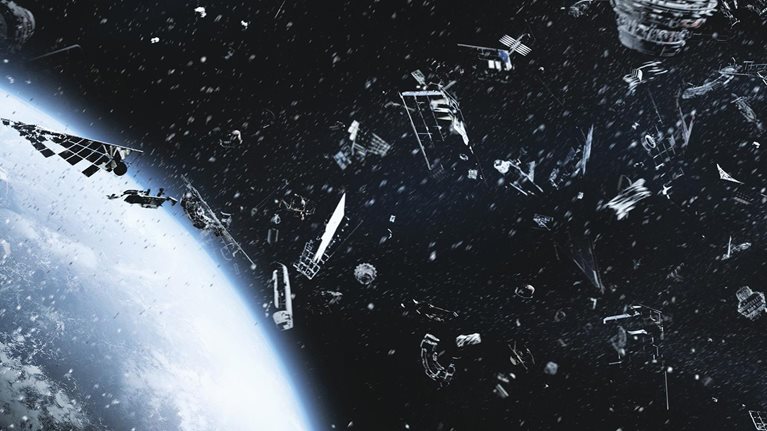
Look out below: What will happen to the space debris in orbit?

Is there a ‘best’ owner of satellite internet?
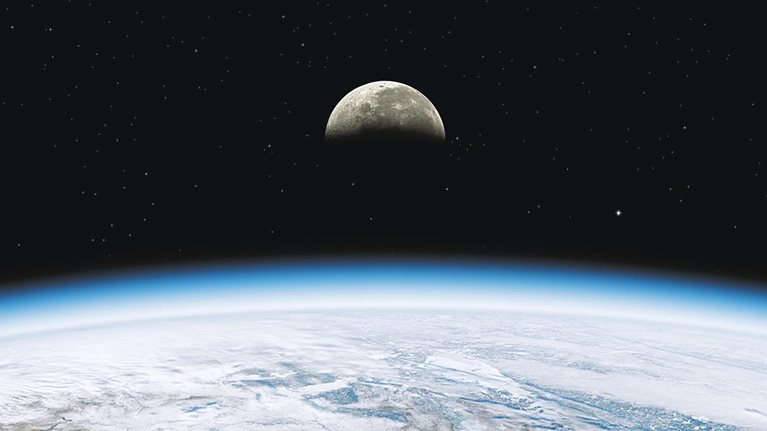
Space: Investment shifts from GEO to LEO and now beyond
US Space Force wants private companies to help it counter 'emerging threats' in space
Officials hope the COSMIC center will allow the Space Force to take advantage of a thriving commercial space industry.

The U.S. Space Force is seeking to maintain space superiority by opening a new office that will help it partner with the private sector and acquire new technologies more quickly.
A ribbon-cutting ceremony held Tuesday, June 6, marked the official opening for Space System Command's (SSC) new Commercial Space Marketplace for Innovation and Collaboration office, or COSMIC. The Chantilly, Virginia facility will serve as headquarters for SSC's Commercial Space Office (COMSO), which was established last year to bolster relationships between the U.S. Space Force and the private sector and capitalize on emerging technologies, according to a Space Force statement .
SSC is the U.S. Space Force's organization for development and acquisitions, and opened COSMIC in a partnership with Virginia Tech Applied Research Corporation (VT-ARC), and in cooperation with the Air Force Research Laboratory's (AFRL) Air Force Office of Scientific Research.
Related: What is the U.S. Space Force and what does it do?
COSMIC's debut comes amidst an ongoing shift in strategy at SSC, as they begin to pivot from developing their own technologies to strengthening partnerships with private companies. In opening remarks at the ribbon-cutting ceremony, Space Force Maj. Gen. Steve Whitney said that as the service transitions from a small number of larger, more vulnerable satellites to constellations of smaller, more expendable ones, "institutions like COSMIC are more important than ever."
USSF Col. Rich Kniseley serves as Senior Material Leader, and runs COMSIC. Kniseley said that COSMIC provides "a place and means for us all to get together and best collaborate on commercial space capabilities, warfighter requirements, and how to best deliver those capabilities."
Indeed, unlike SSC, which is headquartered in Los Angeles, COSMIC's northern Virginia locale puts it just outside the borders of Washington, D.C., and close to several government intelligence agencies and commercial space company offices. "The National Capital Region is a sweet spot for connecting with government agencies in the intelligence community as well as with key space agencies such as NASA and the Space Development Agency," Kniseley said.
Get the Space.com Newsletter
Breaking space news, the latest updates on rocket launches, skywatching events and more!
— US Space Force seeks $60 million for 'tactically responsive space' program
— Space Force chooses SpaceX, ULA for 12 military launches in 2025
— US Space Force grants 4 companies launch pads at Cape Canaveral
COSMIC spans 10,000 square feet (929 square meters), and includes office and conference spaces that are geared toward commercial outreach services. Acting director for the AFRL Office of Scientific Research, U.S. Air Force Col. Janelle T. H. Jackson stressed the importance of COSMIC's initiatives, saying the U.S. faces an increasing threat of military competition. "Our competitors and adversaries are rapidly moving to challenge and surpass the U.S. science and technology advantage and gain superiority in the air and space domains," Jackson said. "Taking an integrative approach by partnering with industry and academia are one of many ways we can lead the challenge."
Join our Space Forums to keep talking space on the latest missions, night sky and more! And if you have a news tip, correction or comment, let us know at: [email protected].

Josh Dinner is Space.com's Content Manager. He is a writer and photographer with a passion for science and space exploration, and has been working the space beat since 2016. Josh has covered the evolution of NASA's commercial spaceflight partnerships, from early Dragon and Cygnus cargo missions to the ongoing development and launches of crewed missions from the Space Coast, as well as NASA science missions and more. He also enjoys building 1:144 scale models of rockets and human-flown spacecraft. Find some of Josh's launch photography on Instagram and his website , and follow him on Twitter , where he mostly posts in haiku.
White House directs NASA to create a new time zone for the moon
NASA picks 3 companies to design lunar rover for Artemis astronauts to drive on the moon
Eclipse 2026: The next total solar eclipse will be Europe's 1st in 27 years
- UFA Totally need private companies and active lawyers to patent technology. Reply
- View All 1 Comment
Most Popular
By Stefanie Waldek April 09, 2024
By Daisy Dobrijevic April 08, 2024
By Alexander Cox April 08, 2024
By Monisha Ravisetti April 08, 2024
By Tariq Malik April 08, 2024
By Kimberly H. Breuer April 07, 2024
By Pedro Braganca April 07, 2024
By Mike Wall April 07, 2024
By Jeff Spry April 07, 2024
- 2 Satellite views of solar eclipse 2024: See the moon's shadow race across North America (video, photos)
- 3 Total solar eclipse 2024: Live updates
- 4 These solar eclipse 2024 photos from our readers are absolutely amazing (images, video)
- 5 I proposed to my fiancée under the diamond ring of the 2024 total solar eclipse. (She said 'Yes!')

IMAGES
VIDEO
COMMENTS
It would also give us an opportunity to start building in space because the raw materials are easy to haul and transport. 10. It gives us an opportunity to see what lies beyond in the final frontier. Unless circumstances change somehow, there will come a point in time when our species will outgrow our planet.
Space exploration unites the world to inspire the next generation, make ground-breaking discoveries, and create new opportunities. Technologies and missions we develop for human spaceflight have thousands of applications on Earth, boosting the economy, creating new career paths, and advancing everyday technologies all around us.
The medical benefits of space exploration extend to pretty much every area of the human body. From muscle physiology to mental health. 6. Improving medical assistance in remote areas. One of the biggest challenges of space travel is solving problems when you can't send any new equipment, experts, or any other help.
When you become a member, you join our mission to increase discoveries in our solar system and beyond, elevate the search for life outside our planet, and decrease the risk of Earth being hit by an asteroid. Your role in space exploration starts now. $4 /month. $10 /month. $20 /month.
The benefits of space can be categorized as either direct or indirect. The direct benefits of exploration include the generation of scientific knowledge, the diffusion of innovation and creation of markets, the inspiration of people around the world, and agreements forged between the countries engaged in exploration.
Space agencies, governments, researchers and commentators have isolated a large number of direct and indirect benefits of space exploration programs including: New technologies that can be utilized in other industries and society (such as the development of communications satellites) Improved knowledge of space and the origin of the universe.
Yes, we can live without traveling to space. Indeed, we did perfectly well over all of the millennia that preceded April 12, 1961. We can meet most of our needs when we stay on Earth—we can ...
Everything you need to know about space travel (almost) - BBC Science Focus Magazine.
Space exploration - Applications, Benefits, Technology: Space visionaries in the early 20th century recognized that putting satellites into orbit could furnish direct and tangible benefits to people on Earth. For example, Arthur C. Clarke in 1945 described a way in which three satellites in orbit about 35,800 km (22,250 miles) above the Equator could relay communications around the globe.
Cooperating with countries around the world. Canada is a partner of the International Space Station, a research laboratory in space. Examples of the impact of space exploration and its benefits for Canadians and all of humanity.
NASA aims to travel to the moon again—and beyond. Here's a look at the 21st-century race to send humans into space. Private spaceflight is not a new concept. In the United States, commercial ...
ESA's exploration of the Solar System is focused on understanding the Earth's relationship with the other planets, essential stepping stones for exploring the wider Universe. While space may hold many wonders and explanations of how the universe was formed or how it works, it also holds dangers. The chance of a large asteroid or comet ...
List of the Disadvantages of Space Exploration. 1. Our current technology makes it dangerous to get into space in the first place. Several agencies are developing "space tourism" packages that can take people in a comfortable aircraft to the very outer layers of our atmosphere, but that is not an exploration effort.
8: It Will Be Good for Your Health. NASA's Twins Study compared astronaut Scott Kelly, at right, during his year in space with his Earth-bound twin brother, U.S. Senator Mark Kelly, a Democrat from Arizona. It provided insights into the many ways microgravity and long-term spaceflight affect a human body.
Space exploration and its relationship with Earth is symbiotic. Often, what works for one benefits the other, and vice versa. This Earth Day, as NASA prepares to send humans farther into the solar system than ever before, the agency is advancing its understanding of fundamental sciences on the International Space Station and working on technologies for Artemis that will benefit future space ...
It's simple: space exploration pays off in goods, technology, and paychecks. The work is done by people who are paid to do it here on Earth. The money they receive helps them buy food, get homes, cars, and clothing. They pay taxes in their communities, which helps keep schools going, roads paved, and other services that benefit a town or city.
And by the time the last Apollo mission was flown ( Apollo 17, in 1972), the program had cost a pretty penny. According to the NASA authorization Hearings held by the Ninety-third Congress in 1974 ...
space exploration, investigation, by means of crewed and uncrewed spacecraft, of the reaches of the universe beyond Earth 's atmosphere and the use of the information so gained to increase knowledge of the cosmos and benefit humanity. A complete list of all crewed spaceflights, with details on each mission's accomplishments and crew, is ...
It is fairly well known that space exploration has resulted in significant innovations, contributing to the creation of GPS, solar panels, implantable heart monitors, cancer therapy, water-purification systems, improved computing, and more (Benefits Stemming from Space Exploration, 2013, p. 1). Since 1976, NASA has recorded over 2,000 spinoff ...
SpaceX has changed the spaceflight landscape during its first 20 years of existence. SpaceX's Starship is stacked atop its Super Heavy for the first time in August 2021 during tests of the new ...
Orbital space travel reaches an altitude of 1.3 million feet (400 kilometers), for which a spacecraft would need to travel at 17,400 miles per hour (28,000 kilometers per hour). ... Another advantage of space tourism is the possibility of finding resources that are being depleted from our planet. If spacecraft take frequent trips to the moon or ...
The passengers who boarded commercial flights just after World War II didn't know that air travel would begin to soar over the next decade, nor did the masses who first logged onto the internet in the 1990s realize that computers would one day provide much of their news, entertainment, and social life. And today, few people understand that the space economy—broadly defined as activities in ...
The U.S. Space Force recently opened the COSMIC center, a new office aimed at taking advantage of a thriving commercial space industry.